
Satellite
Crowd

Design



Satellite
Crowd

Design


Major Transportation Corridors
Situated along Highways 401 and 402, covering over 1,080 square miles.
Proximity to Key Locations
Adjacent to London International Airport, with six universities and four colleges within 62 miles.
Strong Advanced Manufacturing


Nestled in the heart of Southwestern Ontario, Middlesex County offers a blend of urban and rural advantages. Surrounding the City of London and located just two hours from Toronto and Detroit, Middlesex County consists of eight municipalities, each presenting unique investment opportunities.


An extensive ecosystem of manufacturers in motor vehicle parts, agri-food processing, and pharmaceuticals, supported by a solid base of trucking and logistics services.
Easy access to Canadian and crossborder markets, making it a popular choice for both commercial and industrial development. Market Access





SOUTH CAROLINA: Just Right For Business
ALABAMA: Made In Alabama
MICHIGAN: America’s Home For Innovation
MISSISSIPPI: Anything But Usual
INDUSTRY OUTLOOK: New Satellite and Spacecraft Capabilities Crowd Space Environment
A changing space environment calls for more military assets to be deployed, and careful monitoring of other countries, as rapid expansion continues
By David Hodes
INNOVATION AND STRATEGIES: Trusted Automotive Design and Driver Experience Updates Needed But traditional OEMs are lagging behind. Software glitches are piling up as the industry embraces a whole new paradigm of vehicle-to-everything technology
By David Hodes
INDUSTRY INSIGHT: The Non-Stop Cybersecurity Challenge Gets Trickier It’s a dangerous global game of hide and seek as cyber threats continue unabated while cybersecurity experts try to stay ahead of the next attack using AI
By David Hodes
ARIZONA: Business First
NEW MEXICO: At The Quantum Frontier: State And DARPA Forge Bold Partnership
NEW BRUNSWICK, CANADA: Discover The New Brunswick Advantage
ASSOCIATE PUBLISHER
Alan Reyes-Guerra areyes@bxjmag.com 205-862-5175
FEATURES EDITOR
David Hodes
CREATIVE DIRECTOR
Clint Cabiness clint@dialedinmediagroup.com 205-613-5910
EDITORIAL OFFICE
King Publishing, Inc. 1000 Stafford Court Birmingham, Alabama 35242 Tel: 205-862-5175
ONLINE MEDIA ASSISTANT Nick Boliek nick@dialedinmediagroup.com
SUBSCRIPTION CHANGES & REQUESTS 205-862-5175 or www.bxjmag.com
King Publishing, Inc., 1000 Stafford Court, Birmingham, AL 35242; www.bxjmag.com. Advertising rates are furnished upon request. Subscriptions are free to those who qualify. Non-qualified subscriptions are $69 in the U.S.; $89 in Canada and Mexico; elsewhere outside the U.S. is $99 for 10 issues. Back issue rate is $6 when available. Payment must accompany order. The views expressed in all articles and advertisements appearing in the Business Xpansion Journal magazine are solely those of the author and advertiser, respectively.
© Copyright 2025, King Publishing, Inc. All rights reserved. No partof this publication may be reproduced without written permission from the publisher.
POSTMASTER: Send change of address notification to Business Xpansion Journal, 1000 Stafford Court, Birmingham, AL 35242. Subscribers can make address changes by calling 205-862-5175 or by e-mail at www.bxjmag.com.

1000 Stafford Court, BIRMINGHAM, AL 35242
TEL: 205-862-5175 Printed in the U.S.A.



United Airlines, American Airlines, and Japan Airlines have orders and pre‑orders of the supersonic jet Overture. The jet, seating up to 80 passengers, can fly from New York to London in 3 hours, 40 minutes and does not create a sonic boom
BY: DAVID HODES
A changing space environment calls for more military assets to be deployed, and careful monitoring of other countries, as rapid expansion continues

Aerospace industry has added momentum to the development of space at all orbit levels—including geostationary orbit (GEO), low earth orbit (LEO), medium earth orbit (MEO), polar orbit (PO), Lagrange points (L-Points), and others.
Lagrange points (L-points) in particular are of interest to satellite and spacecraft developers, with projects such as NEO Surveyor scheduled to be parked there. NEO Surveyor is a new space telescope specifically created to detect asteroids and comets. It is in development now, slated to be launched in 2027.
Any spacecraft launched to these special L-points remain roughly fixed in an orbit relatively close to and rotating with the Earth. NEO Surveyor is positioned there to get faster and more accurate imaging back to Earth monitors.
As of 2024, there are over 14,000 satellites in orbit, with more than 10,400 actively functioning, according to ABI Research, a tech intelligence organization. Of these active satellites, over 93% are in LEO. Coming up is an expected annual orbital launch cadence of over 480 launches to support over 43,000 active satellites in orbit by 2032.
But more spacecraft parked in various orbits is just the tip of the iceberg.

A report by the World Economic Forum and McKinsey and Company, a business data and analytics company, estimated that the global space economy will be worth $1.8 trillion by 2035, up from $630 billion in 2023.
This includes both “backbone” applications—such as those for satellites, launchers, and services like broadcast television or GPS— and what is called “reach” applications”—those for which space technology helps companies across industries generate revenues.
One example: Uber, which relies on the combination of satellite signals and chips inside smartphones to connect drivers and riders and provide directions in every city.
Another report, this time from the Space Foundation, a nonprofit organization founded to advance the global space community, showed that the global space economy reached an unprecedented $613 billion in 2024—reflecting strong 7.8% year-over-year growth.
The report also revealed that the commercial sector accounted
for 78% of the global space economy, with government budgets contributing the remaining 22%. Government space spending grew 6.7%, to reach $132 billion, with the United States investing $77 billion in national security and civil space programs.
One of the more interesting developments comes from SpaceX, with approximately 5,410 active Starlink satellites in LEO as of February 2024. More have been launched this year—2,100 as of mid-year—as SpaceX expands their direct-to-cell capabilities.
In January 2024, SpaceX began deploying Starlink satellites with direct-to-cell capabilities that will eliminate mobile dead zones. In early January, more than 20% of the land area across the United States and 90% of the Earth remained uncovered by terrestrial service. Starlink satellites act as cell towers in space.
A few months later, SpaceX was demonstrating video calling capabilities. A year and half later, and with more than 600 Starlink direct-to-cell satellites in orbit, the first-generation direct-to-cell constellation was deployed and is now operational across five continents. Starlink’s direct-to-cell has become the largest 4G coverage provider on the planet now, connecting over six million users and counting.
Aerospace development is subtly shifting to focus more on space defense, with calls to militarize space growing louder, as concerns about advances in China’s aerospace industry in particular is bringing more U.S. aerospace assets into consideration.
The U.S. Space Force effort is unprecedented. FY 2026 U.S. Space Force budget is $39.9 billion ($26.1 billion in discretionary and $13.8 billion in mandatory), an increase of $11.3 billion from the FY 2025 enacted budget.
“It is a different ballgame today,” General Stephen Whiting said during his keynote speech at the 40th Space Symposium in Colorado Springs in March, 2025. Whiting is the commander of the U.S. Space Command (The U.S. Space Force and U.S. Space Command are not the same thing. The Space Force is a branch of the U.S. armed forces responsible for organizing, training, and equipping space-related personnel, while Space Command is a combatant command that uses these forces to conduct military operations in outer space.) “In this different ball game, it is our opponents, most notably China, who have accelerated the terrestrial and on-orbit space weapons, expanded their space enabled kill-chains and are moving at breathtaking speed,” Whiting said. “In fact, I now say they’re moving at jaw-dropping speed, and they’ve deployed vast armed arsenals of missiles, all deliberately fielded to threaten our homeland and the joint and combined forces. As our opponents have upped their game, so have we. Given this threat environment that we now find ourselves in there is no longer any debate that space is a war fighting domain.”
War in space is not inevitable, he said, but the U.S. must apply its best thinking to be ready. “That is why, over the past year, at the U.S. Space Command, we’ve developed our best military judgment for what we think we need to win in a conflict. Now, if we are ready to


win that will allow us to deter such a war and to preserve the peace.”
To improve the country’s ability to set conditions in space, mitigate risks and strengthen deterrence, U.S. Space Command in 2024 signed its first-ever campaign plan that integrates and synchronizes operations, activities and investments with key stakeholders in the joint force, across the interagency, and with key allies, he said.
“It establishes a foundation to maintaining advantages in space, leaving no doubt to our opponents that we are stronger and more capable in space than they can possibly imagine,” Whiting said. “To ensure we maximize our readiness for day-to-day operations, so that we are ready for conflict, we are operationalizing the commands’ first-ever experimentation strategy and artificial intelligence and machine learning strategy.
“Our priority for both of these strategies includes integrated resilient, timely operational space command and control, missile

defeat effects, enhanced battle space awareness, space system cyber defense and the business processes of our command.”
Aside from the massive space force developments being worked out are other aerospace developments with roots in the military that seriously advance air and space travel for all terrestrial occupants of planet Earth.
Advances in hypersonic and high-speed propulsion systems are making headlines.
The hypersonic flight market is projected to reach $1.2 billion in 2030 from its current estimated market size of $782 million, according to Hypersonic Flight Market, a data analyst company. The market is driven in large part by the rise in demand for space tourism and the need for high speed transportation to dramatically reduce travel time for customers.
Venus Aerospace, based in Houston and designing next-generation propulsion technologies, built and tested the first rotating detonation rocket engine (RDRE) for faster trans-Atlantic flights, with a design aimed at getting vehicles to travel four to six times the speed of sound from a conventional runway.
Venus demonstrated their engine technology at Spaceport America in New Mexico in May. On the first flight attempt, Venus’s RDRE successfully launched and flew its engine, validating performance and system integrity under flight conditions.
There is also a supersonic revolution underway, revisiting the whole issue of supersonic flight that had been lying dormant since the last flight of the Concorde in November, 2003.
One example: Overture, a supersonic aircraft developed and manufactured by Boom Supersonic, a Denver, Colorado-based startup, is now on the fleet order list of United Airlines, American Airlines, and Japan Airlines, along with many other airliners.
In June, 2021, Boom announced a partnership with United Airlines, which ordered 15 Overture aircraft, at $200 million each,
with an option for 35 more. The deal is worth $3 billion. American reportedly ordered 20, with an option for 40 more.
Overture’s order book stands at 130 aircraft as of mid-2025.
In 2024, Boom completed construction on the Overture Superfactory in Greensboro, North Carolina, which will scale to produce 66 Overture aircraft per year. And on January 28, 2025, Boom’s demonstrator aircraft, the XB-1, broke the sound barrier three times without generating a sonic boom, showing that quiet supersonic travel is possible.
Overture can travel from New York to London in 3.5 hours at a cruising speed of Mach 1.7 carrying up to 80 passengers.
“We are at an inflection point in the U.S. Space Force,” General Michael Guetlein, vice chief of space operations for the U.S. Space Force, said during the 16th Annual McAleese Defense Programs conference held in March in Arlington, Virginia. “We are in the process of pivoting from what used to be a service focused on providing the most exquisite space services on the planet to the warfighter and the nation, such as satellite communications, unwavering missile warning, GPS assistance, and weather information. All of that was our legacy coming into the U.S. Space Force.
“Space was considered a benign environment that we would not have to worry about protecting and defending. But we have seen our ‘near-peers’ (Russia and China) starting to catch up with
Venus Aerospace completed the first U.S. flight of next generation rocket engine, the rotating detonation rocket engine, designed to enable their proposed Stargazer vehicle to travel hypersonically at 7,000 mph
us and starting to get very capable and very determined at denying our capability to use space.
There was a gentlemen’s agreement about space until recently, he said, that the U.S. and other countries didn’t mess with each other’s space systems. “Unfortunately, our current adversaries are willing to go against international norms of behavior, and go against that gentleman’s agreement, and do it in an unsafe and unprofessional manner,” Guetlein said. “Our “near-peers” are now practicing dogfighting in space, with satellite on satellite. The environment has completely changed.” X

This visualization depicts objects in orbit around Earth as of February 2024.

In 2020, Audi announced plans for initial deployments of cellular vehicle-to-everything (C-V2X) communication on northern Virginia roadways, using advanced wireless communications to enhance vehicle safety

BY: DAVID HODES
But traditional OEMs are lagging behind. Software glitches are piling up as the industry embraces a whole new paradigm of vehicle-to-everything technology
The automotive industry came out of a stressful and very disruptive pandemic focusing more on developing electric or hybrid cars with more autonomous features, using more sensors and software to assist or automate driving, with new connectivity features enabling communication between the vehicle, other vehicles, and infrastructure.
.........................................................................................................
This new future of connected cars has been gaining traction since 2020.
But then the industry hit a few bumps in the road, according to a J. D. Power study. Vehicle problems after three years of ownership have reached the highest level since 2009, according to the J.D. Power 2025 U.S. Vehicle Dependability Study released in February.
Compared with 2024 results, the industry experienced a 6% increase in problems per 100 vehicles. The culprit? Software defects.
The connectivity implementation in electric vehicles (EV) has been termed vehicle-to-everything technology (V2X).

There are now various V2X frameworks being studied and applied, such as vehicle-to-grid (V2G), vehicle-to-home (V2H), vehicle-tobuilding (V2B), vehicle-to-vehicle (V2V), vehicle-to-load (V2L), and vehicle-for-grid (V4G).
According to a review article in The Journal of Energy Storage, V2X is defined as the practice of using the batteries of EVs to offer energy services and derive extra value from the battery asset during times when the EVs are not in use.
V2X services are designed to generate profit from battery assets by implementing dynamic uni-directional or bi-directional control charge, with the goal of bringing benefits to the grid system. This capability transforms an EV into a mobile energy storage unit, enabling it to send electricity back to the grid during peak demand or to power a home during an outage.
Servitization in automobile development is a business model by which OEMs transition from selling products to offering integrated
product–service systems with cars, competing not solely through hardware but through value-added services such as V2X service capabilities, according to a review article published by the IEEE.
Servitization has emerged as a potential opportunity for OEMs to support future economic growth and product differentiation. Tesla, Rivian, and Lucid, among other traditional automotive OEMs, are increasingly adopting this new software-centric paradigm with the potential to redefine the ownership experience, the review article added.
It’s an interesting future for EVs in the automotive industry, but the review article cautioned that several challenges had to be addressed, such as the deployment of infrastructure, costs, and impact on the power system to get the most out of V2X.
Additionally, software-defined vehicles (SDVs) represent a transformative shift in the automotive industry, according to a review article by the IEEE, moving away from traditional hardware-centric design toward vehicles in which software plays the central role in defining functionality, performance, and user experience.
It’s all coming about in response to the static and limited user experience of traditional vehicles, particularly when compared with the evolution of smartphones. Smartphone are designed as updatable platforms that support continuous enhancement. That’s what automakers are striving to achieve. “It is notable that the software complexity of modern luxury vehicles now exceeds that of an advanced aircraft,” the review concluded.
J.D. Power study found that the infotainment software piece for cars is the number one problematic category. Within that infotainment section, there are software defects.
Problems related to software defects were troubling, according to the J.D. study. Android Auto and Apple CarPlay connectivity were iffy, becoming a top problem in the industry for a second consecutive year, according to the study.
Built-in Bluetooth systems wi-fi are also among the top problems related to software defects this year. “While software defects comprise only 9% of the total problems owners experience, as vehicles become more software-reliant, this risk becomes more prominent,” the study concluded.
Other problems, such as smartphone integration, usage or connectivity, and keeping pace with the rate of change in smartphone technology, remain an ongoing challenge for the auto industry, even after automatic updates were built in to help.
Then there is the active driving experience, where a car uses cameras and radar to control a vehicle’s steering, acceleration, and deceleration to help maintain speed at a set distance from the car ahead, and keep the vehicle centered in its lane. “When we look at active driving assistance, customers complain a lot that it’s annoying and it’s distracting,” Kathleen Rizk, senior director for J.D. Power told BXJ. She specializes in user experience. “They don’t really understand those limitations, such as it’s not going to work if lane markings aren’t clearly visible, or if there’s

glare, or if there’s snow. So what happens with all of that is they think the technology doesn’t work, and they don’t trust it.”
J.D. Powers has done a lot of work in customer education, with limited success. “Some customers think they know exactly how to use this technology, and don’t need help,” Rizk said. “Then when we test them and ask them what happens when a certain situation arises for a tech feature that they should know how to use, they don’t know at all. They basically fail our test.”
Some of these car systems create an issue for the consumer, such as systems that alerts drivers with a certain notification, for example. “The customer gets really frustrated with all these warnings,” Rizk said. “But the automaker is just trying to make the road safer. So it’s a tough dilemma for the automaker: Do you irritate that customer, or do you try and make the road safer?”
Alot of OEMs are working on messaging and prompts describing what will be happening when the car’s software experiences an update, with details about what’s being improved and what’s not being improved. “But a lot of what customers are saying right now is that they are just not really noticing a difference,” Rizk said. “Only 30 percent of customers are saying that things actually got better, so there’s a big disparity there. And two percent said things got worse.”
Norton, a director for
told BXJ that he knows there are vehicle apps and mobile phone apps connected to the same vehicle. “Some of what we’re seeing is integrating that messaging between in-vehicle experience on the mobile app. When you’re sitting on your couch, you can get a push notification that says, hey, these are some of the pieces that are going to be updated. And it may use different visualizations so the driver can be more in depth with it, because it’s on the mobile phone versus in the vehicle.
“I think OEMs right now are trying to figure out the important information to tell the customers. What is the change that the customer is facing during that update, and what are some things that we can just do in the background that we really don’t need to tell the customer about?”
There are more connectivity technologies moving down from premium cars to more mass market vehicles, Norton said. “I would expect, as penetration goes up, we will see more problems occur with a lot of these issues. More and more of these customers are going to be experiencing these interactions with technology that they hadn’t had before. I would expect to see these technology issues continue to be problematic for customers.”
J.D. Power researchers also found that battery electric vehicles got better, while plug-in hybrid electric vehicles got worse over the last year.
Hybrid vehicles had the fewest problems, followed by gas-powered vehicles, electric vehicles and diesel. Certain Lexus, Toyota, Mazda, and General Motors models all ranked high on the study’s list for dependability.
But in a broader view, according to Price Waterhouse Cooper (PWC) research, traditional OEMs are also behind in the SDV space compared to Chinese and tech-forward OEMs, who are already designing their vehicles with a software-defined approach. “Closing the gap with Chinese and tech-forward OEMs presents a significant hurdle for traditional OEMs given product portfolio complexity,” the PWC research concluded.
For example, traditional OEMs have 40 to more than 100 models in the market based on multiple platforms, which makes development and deployment of an SDV approach across their product portfolios both time consuming and capital intensive. “To succeed, traditional automotive companies will need to adapt to their product
development processes and business models to effectively compete with China and tech-forward OEMs” according to PWC.
So the race to develop software-defined vehicles, with connectivity to multiple sources, and sell it as more than just a car, is picking up. The consumer is ready for it, but tentative about how it works to benefit them.
International competition is picking up. And the need for reinventing how cars are made and what they can do—as always in this industry—remains an imperative.
Signalling a significant change to come in terms of developing and using more software-based approaches to car design and driver experience, PWC’s annual global CEO survey found that 48% of automotive CEOs do not believe their businesses will be economically viable in 10 years without reinvention.
The automotive industry is at war with its legacy, according to one of the findings by HFS, an industry research organization.
“Electrification, connectivity, autonomy, sustainability, and customer expectations necessitate total reinvention. CIOs must be at the forefront of reinventing platforms, redefining engagement models, and reshaping how value is created and captured.” X



BY: DAVID HODES
It’s
a dangerous global game of hide and seek as cyber threats continue unabated while cyber security experts try to stay ahead of the next attack using AI

Cybersecurity is an ever-moving target of opportunity, a classic cat-and-mouse game of experimenting with access that can lead to locking up a company’s data sources for ransom, or completely destroying a company’s IT system with cyber attacking worms and other threats gaining a foothold generally through inadvertent means such as email.
What is happening now centers more around insider threats, ie, company employees becoming either willing or unwilling partners for cyberattacks.
In a global survey of 1,000 cybersecurity professionals by Exabeam, an information security company, 64% of respondents said that insiders are now more dangerous than external actors.
Nearly 90% of respondents say they have an insider threat program, but most lack the behavioral analytics needed for early detection. What’s more, two of the top three insider threat vectors are now AI-related, and survey results found that “GenAI is enabling faster,
stealthier, and more adaptive attacks.”
Cybersecurity is a tricky landscape for CEOs, and they know they have to act now. Netwrix, a cybersecurity provider, reports that 68% of organizations suffered a cyberattack within the last 12 months. Phishing was the most common entry point. And 53% of organizations that suffered a data breach faced financial consequences as a result.
About 1 in 10 reported other serious consequences, such as loss of competitive edge and decreased sales or customer churn, according to Netwrix.
The cloud has emerged as a key battleground for cybersecurity incursions, according to Crowdstrike, a cybersecurity provider, noting a 136% surge in incursions over the last few years. “Adversaries are exploiting its scale, sensitive data, and misconfigurations to establish persistence, move laterally, and exfiltrate information—often without triggering alerts,” according to the CrowdStrike 2025 Threat Hunting Report.
In fact, a report by IBM found that 52% of CEOs say complexity is the biggest impediment to their cybersecurity operations. “Security fragmentation is now the unhappy norm,” IBM reported. The average organization has 83 different security solutions from 29 vendors, according to IBM.
Cybersecurity is more expensive according to IBM reports. The average cost of a data breach rose 10% in 2024 to an all-time high of $4.88 million. And an organization’s overall security costs have also risen significantly, with cybersecurity spending growing more than 50% from 2023 to 2025. Meanwhile, ironically, 80% of executives agree they face pressure to reduce the cost of security.
A survey by Crowdstrike found that 80 percent of respondents preferred genAI integrated into cybersecurity platforms over standalone solutions. “That is a shift toward the adoption of integrated technologies that enhance efficiency and effectiveness across security operations,” according to the survey.
Nearly two-thirds would even overhaul their current security stack to access the right genAI tools. GenAI tools can be used to identify potential attack vectors, quickly respond to security incidents, and add computing power to threat intelligence capabilities.
There is a downside to using genAI tools. Data security is the primary risk that organizations face when their users adopt genAI apps, according to a cloud and threat report by Netskope, because they use genAI for summarization activities.
The true value of genAI apps, like Chat-GPT, Grammarly and others is their ability to summarize large documents, large datasets, and source code, meaning that someone may be sending sensitive data to genAI apps for summarization. “While the user base for genAI apps will remain relatively small for the foreseeable future, the data risks will increase dramatically as the amount of genAI use increases among that population,” according to Netskope.
Sarah Armstrong-Smith, the chief security advisor to Microsoft, told BXJ the major thing she is seeing now is the scope and scale of some of the cyberattacks, particularly focusing around critical infrastructure. “We’re moving from this era of what we will call disruption
to destruction,” she said. “That is ransomware without the extortion demand. And part of that is that we’re going to probably see industrial accidents that we may not have attributed to cybersecurity before.”
Part of what is going on is the fact that nation-state actors and organized crime are operating together, she said. “We know that because of the tools, the technology and the know-how, that a lot of these organized crime gangs potentially wouldn’t have had access to historically, which means that they’re able to elevate their cyberattacks. They’re able to go much further, and then targeting becomes on that sort of critical infrastructure. We’re talking about electricity grids. We’re talking about utilities. And about hospitals, which run on very old out-of-support infrastructure. That ultimately is what the threat actor is relying on.”
Cyber security is often being seen as a cost center by businesses, she said, as a sort of necessary evil that must be done to manage risk. “I think the real opportunity is how do you turn this to a competitive advantage?”
Different institutions and sectors are good at doing their due diligence—having a safety- and people-first culture. “They put a lot of investment into a lot of these processes, into the training and the awareness, having a good culture where people are not afraid to put their hand up if they’ve made a mistake. That level of due diligence should go right up to the board level.”
What governments can do is really two-fold, according to ArmstrongSmith. “We’re seeing more and more regulation across different countries that often comes with fines. So if you’re not meeting the compliance requirements, or if you get breached, there’s a huge fine, which obviously acts like a stick as opposed to a carrot.”
If it should be more of a carrot, how could government encourage people to do something proactively that’s actually going to make a big difference? “Maybe they could do tax breaks, they could offer grants, and that ultimately enables a lot of those institutions to invest at scale, rather than having to push the cost down to cash-strapped consumers, particularly in the current economy. Otherwise, we just end up going round and round in circles. We don’t really get anywhere.”
The evolving cybersecurity issue really centers on the smaller businesses. A Mastercard survey of more than 5,000 small and mediumsized business owners across four continents showed that 46 percent have experienced a cyberattack on their current business, and nearly one in five had an attack, then filed for bankruptcy or closed their business.
In the survey, 73 percent of these business owners say getting employees to take cybersecurity seriously is a challenge, and only a quarter are very confident in their ability to educate employees on cybersecurity best practices.
Many ransomware attacks happen at the smaller enterprises because they’re more likely to pay. “That’s what the threat actor is hoping for,” Armstrong-Smith said. “Because maybe the smaller company doesn’t have insurance, or it doesn’t have the backups. It doesn’t have the level of capability that big enterprises do to protect themselves. So they’re more likely to not just to succumb to a cyberattack, but having to


pay to get out of situation as well.”
So how can the big enterprises help the little enterprises, particularly where they don’t have the same level of capability, knowledge and knowhow? “Ultimately, they all have data, they all have people, they all have infrastructure, they all have requirements they have to meet,” she said. “And I think it’s just changing that mindset to what helps one helps everyone.”
Purpose-built cybersecurity to protect the growing use of application programming interfaces (APIs) is on the radar for most big enterprises. But organizations struggle to secure their APIs, and API-related breaches are common.
Crowdstrike identified a number of ways cyberattacks can happen with APIs. Four examples of exploitations by cyber actors

on APIs include broken user authentication, which happens when APIs do not adequately authenticate users, allowing attackers to impersonate legitimate users; lack of protection from automated threats, where automated attacks, such as bots exploiting business workflows, can cause financial losses or damage an organization’s reputation; server side request forgery (SSRF), which occurs when an API accepts URLs from clients without validating them, allowing attackers to send malicious URLs that expose internal services; and unsafe consumption of third-party APIs, where APIs rely on using third-party APIs, which may have their own security weaknesses.
So.. where does this cat-and-mouse game end? “It’s like how do you avoid the kinetic war (conventional warfare)?,” Armstrong-Smith said. “It’s exactly the same as how do you avoid the cyber war, and which one can do more damage,
ultimately, as a result.”
curity, she said, and in how people are thinking about what their targets are, and who they’re collaborating with. “It’s just a much bigger issue than from just a technology security perspective. The challenge is all of these things colliding together.”
coming? Do they have the right processes? Do they have the right controls? Do they have the right level of morality and ethical principles behind it? “Some cyber attackers don’t care. I think that’s the reality,” Smith-Armstrong said. “We might live by a moral code in our Western way of thinking. Others don’t. And I think that’s the real problem. We don’t know how far they’re willing to go. But it’s something we’ll be collectively very mindful of I think.”
Home to a vibrant ecosystem of startups and established enterprises, Montgomery County, Maryland, fosters a collaborative environment where innovation thrives. The region’s robust infrastructure, supportive local government, and access to venture capital make it an attractive destination for entrepreneurs and investors alike.
Maryland’s Montgomery County stands as a renowned global technology hub, spearheading critical missions in cybersecurity, biotech, cleantech, medtech, high-tech, satellite tech, robotics, CHIPs, IoT, AI/VR, advanced manufacturing, aerospace capabilities, and beyond. Positioned at the forefront of these industries, the county’s proximity to the nation’s top security and health agencies like the National Institute of Standards & Technology (NIST), the Food and Drug Administration (FDA), and the National Institutes of Health (NIH) enables companies to be in close quarters with key decision-makers and strategic partners. Satellite campuses for top academic research institutions also furnish a steady stream of highly qualified talent and abundant training resources.
Maryland recognizes that it has a vital role in attracting and retaining the talent needed to support high-growth sectors like cybersecurity and Montgomery County is at forefront of this effort. A recent Cybersecurity Talent

Strategy report, which outlined a comprehensive plan to prioritize economic growth, diversification, and resilience in the state of Maryland through the Cyber Maryland program, forecasted a 39% growth in employment of Information Security Analysts from 2022 to 2032 in Montgomery County alone. Together the County and its local partners are committed to nurturing future talent through programs like Montgomery College’s—the county’s leading community college, ranked 1st in the state and 17th in the country—Cyber Workforce Accelerator program, which is designed to fast track entrance into the cybersecurity field. With a population of over 1M residents, where a third of adults aged 25 or older have an advanced degree, Montgomery County is well-positioned for continued expansion of its current business ecosystem that hosts more than 6,000 technology companies. Proximity to top ranking higher education institutions like The Universities of Shady Grove and Montgomery College keep the talent pipeline in the county steady and robust. The Montgomery County Economic Development Corporation, the county’s official economic development agency, is a nonprofit public-private partnership that works in tandem with academia, the private sector, and local government to continue to develop the county’s talent pipeline and ensure that the workforce develops the skills needed for the future. Visit thinkmoco.com


Near the Nation’s Capital Top Talent Defines What Is Next. .
With 4,500+ satellite and advanced communications professionals across 121 companies, Montgomery County, Maryland, is where the world's brightest minds choose to innovate.



Uniquely situated halfway between New York and Miami, South Carolina’s integral transportation system – interstates, ports, and rail – make it easy to reach East Coast markets, as well as markets abroad. South Carolina builds things well: cars, homes, airplanes, and chemicals. Recognized for achievement in foreign direct investment, South Carolina is home to more than 1,200 operations of international companies.
.........................................................................................
South Carolina is home to one of the nation’s most dynamic aerospace centers. With an impact of more than $28 billion, the aerospace sector has evolved into a major pillar of the state’s economy. Since 2009, when Boeing selected North Charleston for its final assembly and delivery facility, the state’s aerospace industry has soared.
With an economic impact of more than $27 billion, the automotive industry is now an integral part of the state’s economy. As a result, a wide range of leading automotive companies in automotive manufacturing and production are
based in South Carolina. Their technically skilled workforce has made the Palmetto State the U.S. export leader in completed passenger vehicles.
South Carolina has one of the nation’s fastest growing container ports, two innovative inland ports, 2,300 miles of rail lines, and more than 41,000 miles of state-maintained highways.
Agribusiness is the true homegrown industry of South Carolina. Contributing an annual economic impact of more than $46 billion and accounting for 247,000 direct jobs statewide, agriculture products and food production are as important to their future as they have been to their past.
Each year, nearly 100 companies benefit from the skilled individuals trained by readySC. More than 300,000 individuals strong, this division of the SC Technical College System ensures that companies can depend on a strong, productive workforce. In addition, South Carolina has one of the lowest unionization rates in the country.
For more information on South Carolina, please contact the South Carolina Department of Commerce at 800-868-7232 or visit www.sccommerce.com .








Charleston, South Carolina is a globally connected region powering growth in Aerospace, Automotive, Information Technology, Life Sciences, Advanced logistics, and more.
Deepest harbor on the U.S. East Coast and 8th largest U.S. container port.
Exclusive home of Boeing’s entire 787 Dreamliner production line

40+ new people move to the Charleston region each day. That is 16,000+ people in net in-migration annually.
#2 Top State for Doing Business Area Development, 2025

Home to Volvo Cars & Mercedes-Benz Vans – leaders in EV production.
Strategic Location: 3 interstates run through the region (I-26, I-95, I-526), 67% of U.S. within 2-day drive.
Charleston International connects to 53 U.S. airports with 60+ daily nonstop flights.
.........................................................................................
The Charleston region’s commitment to economic development has been rewarded with positive economic growth. Natural beauty, world-class culture and historic charm have made the area a popular destination for visitors, as well as for business investment. With a fast-growing population, a technically skilled workforce, efficient access to the global marketplace, and a diverse portfolio of real estate options, Charleston offers the right advantages for business success.
The Charleston metro has experienced unprecedented business growth and economic diversification, with both multinational corporations and fast-growing startups taking advantage of their globally competitive business environment.
With the most productive and efficient seaport in North America, an integrated rail and highway system, and an international airport, Charleston provides seamless connections to the global marketplace. Their central location, roughly halfway between New York and Miami, offers prime access to the U.S. Southeast.
Charleston's collaborative business community provides optimal support for startups and established companies, fostering innovation through a creative network, skilled talent pool, colleges and universities, incubators, accelerators, co-working spaces, code education programs, and events. Charleston offers the workforce and talent companies need to succeed and grow. Even with recent successes such as Boeing, Volvo, and Daimler expanding in the market, Charleston MSA’s labor pool offers more opportunities for continued business growth. Since 2010, it has grown 3 times faster than the U.S. average and twice as fast as South Carolina’s average.
Anchored by Boeing SC, Charleston is an established destination for aerospace companies. Charleston is one of the nation's Top 10 mid-size metros for workforce growth in aircraft mechanics, computer hardware and electrical engineers. This community offers energy, excitement and innovation to the aerospace industry. As an international hub for aerospace and aviation, Charleston is the home of the 787 Dreamliner and the Boeing Centers of Excellence for IT, Research & Technology, and Engineering Design. Charleston is one of three places in the world assembling and delivering wide body jets, offering the R&D, subassembly manufacturing, suppliers, advanced materials manufacturing, and non-destructive mechanical testing expertise necessary for your operation to be successful here.
South Carolina is the United States top exporter of both tires and completed passenger vehicles. The Charleston region is home to 90+ automotive OEM companies and component manufacturers. Their central East Coast location and access to the Southeast, one of the fastest-growing markets in the U.S., are strategic advantages.
Charleston offers an ideal business environment for technology companies, entrepreneurs, and talent to thrive in a metro that consistently tops the World’s Best Cities lists. Home to 1,600+ tech companies, a skilled talent pool, and an ever-expanding supportive ecosystem, they offer what you need to succeed.
Charleston is a globally competitive and highly attractive city for
life science talent. They have more than 400+ medical devices and pharmaceutical manufacturers, research laboratories, and service companies. With a growing IT community, Class A office space with research and lab capabilities, acres of real estate suitable for advanced manufacturing, and over $300M in yearly research funding at the Medical University of South Carolina (MUSC), Charleston provides the ingredients for success at all phases of a company’s growth.
International commerce has been a key driver of the Charleston economy since 1670. With one of the world's most productive, deepwater seaports, quick access to international air hubs at JFK, Atlanta, and Dulles, dual rail service, multiple interstates, and highly reliable communications infrastructure, Charleston provides companies with a seamless connection to world markets.
For companies looking to export and import, Charleston’s central East Coast location and access to one of the fastest-growing markets in the U.S.—the Southeast—are strategic advantages. The Port of Charleston offers the deepest harbor in the south Atlantic and provides global access to 150+ countries. Companies involved in international trade can take advantage of nearly a dozen generalpurpose sites with Foreign Trade Zone 21, comprising almost 8,000 acres (3,238 hectares) of space. FTZs are restricted-access sites that allow businesses to store and process goods or raw materials duty and quota free until being transported into the Customs territory of the United States or into another NAFTA country (Canada and Mexico).
We’re a growing network of investors, staff, business, academic and governmental partners committed to strengthening regional employment and building a base of high-value industries to improve the three-county Charleston region’s economy now and into the future.
The Charleston Regional Development Alliance serves as a catalyst for long-term regional prosperity by attracting the world’s best companies, talent, and entrepreneurs. The staff of the Charleston Regional Development Alliance provides local, national and global businesses with in-depth knowledge of the greater Charleston area and its economic assets. They’re a growing network of investors, staff, business, academic and governmental partners committed to strengthening regional employment and building a base of high-value industries to improve the three-county (Berkeley, Charleston, Dorchester) Charleston region’s economy now and into the future. The Charleston Regional Development Alliance serves as a catalyst for long-term regional prosperity by attracting the world’s best companies, talent, and entrepreneurs. For more information, please contact them at 843-767-9300, email at alliance@crda.org, or visit their website at www.crda.org
Stretching across the vital I-77 corridor, this region resonates with a spirit of innovation, collaboration, and a wealth of Southern hospitality. Explore their world-class infrastructure,


skilled workforce, and business-friendly environment that make this region the perfect place to launch or expand your business.
The South Carolina I-77 Alliance is a county-driven non-profit economic development organization dedicated to positioning and marketing the five counties as a world-class business location. Their mission is to attract capital investment and high-quality jobs to the region. This region includes the counties of Chester, Fairfield, Lancaster, Richland, and York.
Home to thriving businesses and a diverse population, the South Carolina I-77 Alliance offers unmatched opportunities for growth and development. Companies benefit from robust transportation networks, access to major markets, and supportive local communities committed to driving success.
With easy access to Charlotte, Columbia, and other major southeastern cities, businesses in the Alliance region enjoy strategic advantages for both domestic and international commerce. The area’s pro-business policies, excellent quality of life, and growing talent pool further set it apart as a premier destination for investment and innovation.
Key target industries include Advanced Materials, Aerospace, Corporate Operations and Financial Services, Motor Vehicles and Components, plus Electric Vehicles (EV) and Energy Storage.
The region now attracts international and domestic investment, creating jobs, increased profits, and building a bright future for producers of plastics, glass, ceramics, composites, metals, and alloys.
South Carolina has fostered an enduring business-friendly environment that cultivated GDP growth of 34% from 2012 to 2017 in the Aerospace cluster, compared with only 17% nationally. Many of the brands calling South Carolina home are familiar: The Boeing Companies, Lockheed Martin, General Electric, Honeywell, and 3D Systems. Furthermore, many other well-known manufacturers depend on these companies for parts and components.
In Corporate & Financial Services, the state achieved GDP growth of 36% from 2012 to 2017, compared with 35% nationally. Major brands located in South Carolina include Blue Cross Blue Shield, Continental Tire, Aetna, Aflac, AT&T, Verizon, Citi, and Wells Fargo, along with many other notable companies in the region.
The I-77 Corridor is at the center of the manufacturing boom for both electric vehicles themselves and the electric vehicle supply industry (EVSI) that is sweeping the globe. Volkswagen’s new spinoff, Scout Motors, is building a $2 billion facility in Blythewood, South Carolina, just north of Columbia. This massive project will create over 4,000 jobs and produce up to 200,000 electric SUVs and pickups annually, starting in 2026.
Learn more about the SC I-77 region and discuss possible opportunities by contacting them at 803-789-3467 or email chris.finn@i77alliance.com or visit their website at www.i77alliance.com. X


In Alabama, they know there’s more to life than just work. And thanks to their state’s diverse landscapes and vast cultural offerings, there’s something for everyone to enjoy. From hiking trails in mountain ranges and miles of sandy beaches to award-winning restaurants and celebrated entertainment options, life in Alabama makes every day special.
.........................................................................................
Life in Alabama means plenty to do, and a low cost of living means your dollar will stretch further. Nationally renowned health centers and doctors, acclaimed universities, prime outdoor opportunities and an affordable housing market add up to a quality of life that can’t be matched.
Businesses all across the world are attracted to this state for a singular reason: the strong work ethic that characterizes Alabama and all those who work here. Alabama is full of
qualified workers, including graduates from the state’s higher education institutions and skills training programs. The dedication to developing the workforce continues with programs like AIDT, a state agency established to support economic growth through workforce training and recruitment.
Alabama’s rich geographic variety and wide-open spaces mean there’s plenty of room for new and established businesses to grow. Thanks to the state’s prime location in the South and on the Gulf Coast, Alabama businesses have prime access to supplies, materials, personnel and products to and from the rest of the nation and the globe.
The state offers tax credits and abatements to benefit your business. Alabama can abate the non-educational portion of property taxes for qualifying projects for up to 20 years, when businesses employee apprentices, Alabama can provide state income tax credit for employers.
You may not think you’ve heard of Alabama, but you’ve heard of the major companies that have made their home in the
state. Scientists at NASA in Huntsville are developing the most powerful U.S. rocket ever, while global automakers Honda, Hyundai, Toyota, Mazda and Mercedes are tapping into Alabama’s talented workforce.
Meta plans an expansion of its Montgomery Data Center, bringing the technology company’s total investment in Alabama’s capital region to more than $1.5 billion.
Ellen McNair, Secretary of the Alabama Department of Commerce, said Meta’s decision reflects the state’s growing competitiveness in the technology sector.
“Meta’s continued investment in Montgomery is a powerful validation of Alabama’s reputation as a destination for world-class technology and innovation,” Secretary McNair said. “This expansion reinforces our state’s ability to compete for global projects, create high-quality jobs and build the infrastructure needed to support a modern economy.”
Meta first announced an $800 million investment to open the next-generation data center in Montgomery in April 2024.
Once completed, the Montgomery Data Center campus will total more than 1.3 million square feet and support over 100 operational jobs. Optimized for AI workloads, the data center will be a part of the global infrastructure that brings Meta technologies and programs such as Facebook and Instagram to life.
The Montgomery Data Center also continues to generate long-term economic benefits through construction activity, supply chain opportunities and workforce development tied to advanced industry growth. It will support over 1,500 skilled trade workers on site at peak construction, according to the Chamber.
For more information on the business opportunities in Alabama, please contact the Alabama Department of Commerce at 800-248-0033 or 334-242-2400, or email to contact@madeinalabama.com

Innovation, industry and growth fuel Shelby County, Alabama and its 14 communities. Offering the perfect balance of work and life in its natural suburban and rural locations. Plenty of space to build or expand, award-winning life quality, and executive and workforce housing options, make it the perfect spot to produce innovative, automotive, food and healthcare products that can easily be shipped nationwide or globally.
I-65 and US 280 corridors make it easy to grow business in all directions with a great rail system for manufacturing and proximity to the Gulf Coast port.
The natural beauty of Shelby County, coupled with the proximity of the University of Alabama at Birmingham (UAB) and UAB Hospital just up the interstate, ensures endless recreation options for the PhD and executive level workforce found here.
Legacy Utilities & Mining Operations Shelby County has some of the highestgrade limestone in the world that is used for products from pharmaceuticals to cement and road aggregate.
Biotechnology and software companies are locating, growing and succeeding, and both are key target industry sectors for Shelby County as leaders look to an innovation economy for the future.
Legacy biotechnology companies Avanti Research in Alabaster (CRODA), BioCryst and BioHorizons in Hoover have significant operations in Shelby County. EBSCO Industries and McLeod Software have their corporate headquarters in the county along with biotechs BioGx, and Reliant Glycosciences.
Due to the strong Alabama automotive
Tech280 is a recognized innovation hub uniting tech companies, skilled talent and v ibrant communities, and promoting oppor tunity and regional pride.
From downtown Birmingham to the Georgia state line, Tech280 is Alabama’s innovation highway for entrepreneurs, professionals, students and industry leaders Located along the US 280 corridor and only a shor t drive from Auburn University, Atlanta, UAB and Souther n Research, this corridor connects and highlights industry leaders in software, biotech, academia and research under one regional identity: Tech280.










Tech280 is Alabama’s innovation highway, where entrepreneurial energy, industry exper tise, and life quality converge along US 280 Star tups and tech talent are welcomed, celebrated, and elevated on Tech280 in a community creating valuable connections and sparking innovation
industry surrounding Shelby County, AGC Automotive, a Japanese glass supplier, completed a facility expansion, as did Sunbelt Paper & Packaging in Calera, following construction of a 200,000+ square foot facility by Graham&Co. A few opportunities remain to own or lease space in existing buildings – learn more at 58inc.org from the countywide economic development team .
Shelby County residents comprise approximately 116,000 (27%) of the participating workforce in the Birmingham-Hoover metro and Shelby County major employers and local businesses make up at least 20% - and growing - of the jobs in the region and similarly about 20% of the total gross domestic product of the Birmingham-Hoover MSA.
Shelby County is positioned right along the 280 corridor, Tech280, which is a growing landing pad for innovation in Alabama. Spanning from the Birmingham MSA to the state line, Tech280 is the natural choice for professionals, students and innovators to thrive.
Shelby County’s educators contribute to this culture of careers and work. Served by four public school systems including Shelby County Schools, along with three city school systems in the county – Alabaster, Pelham and Hoover, and several well-respected private schools including Indian Springs and Briarwood.
Jefferson State Community College, “Jeff State,” part of the Alabama Community College system and based in east Jefferson County, has its largest enrollment at the Shelby/Hoover campus


• General Aviation airport with 100’ x 5500 lighted, grooved runway.
• 19 acres available for development

• 3 miles from Interstate 65.
• 22 nautical miles south of Huntsville Airport
• Jointly owned by the city and county.
Call Airport Director Ben Harrison at 256-531-6666 with questions.

in north Shelby County with 5,000 students, and generates a tremendous economic boost for central Alabama by training workers. Having a campus on Tech280 gives students access to professional, growing companies they can strive for. Most recently, Jefferson State Community College constructed a new welding lab at their Shelby County campus providing advanced manufacturing training skills to job seekers and companies within the area.
The University of Montevallo has an average enrollment of 2,600 students. In addition to the student impact on the community, UM also employs more than 500. The university's Center for the Arts features two performance venues that seat 450, an art gallery, digital fabrication and design labs, vocal performance rehearsal rooms, dance studio and more.
Alabama’s largest state park, Oak Mountain State Park, hosts more than 200 events annually while thriving as a local park for nearby residents and hosting internationally known XTERRA events. Shelby County also has a healthy service and hospitality industry. Shelby County has invested heavily in parks and other recreation that has paid off in more visitors and sports tourism
Cullman Regional Airport is a General Aviation Airport located approximately 5 miles north of the City of Cullman, 45 miles north of Birmingham and 45 miles south of Huntsville.
The airport is jointly owned by the city and county and averages nearly 30,000 operations annually on a lighted, grooved runway that is 100’ x 5500’ that is approved for a runway extension to 6200 feet.
A full service FBO open 7 days a week serves 87 based aircraft, several maintenance facilities, business and public traffic. Both piston and turbine maintenance services will be offered before the end of 2025.
Nineteen acres of property is being prepared for development Operations based at the airport include Air Evac LifeTeam, Tennessee Valley Aviation Services, Martin Aviation (2025), ALEA, Alabama State Troopers, Cullman Police Department, Wallace State Community College Aviation Program, and Skydive Alabama.
Cullman County population exceeds 90,000 people and Cullman traditionally ranks each year as one of the most successful in the state for new and expanding industry, job creation and capital investment. Cullman industry has invested more than $1.2 million in the past 10 years.
Find out why more than 100 manufacturers call Cullman home and the support role Cullman Regional Airport plays in their success. The runway specifics are:
• Runway PCR: 243/F/D/X/T
• Dimensions: 5,500' x 100' (1,676m x 30m)
• Runway Design Code: B-11
• Pavement Type/Condition: Asphalt/Excellent Condition
• Pavement Strength:
• Single Wheel — 61,000 lbs
– Double Wheel — 78,000 lbs.
– Double Tandem — 130,000 lbs.
• Runway Edge Lights: Medium Intensity
Call or email Ben Harrison at 256-775-1011 or bharrison@cullmanal.gov
What's the number one selling point for the workforce in Gadsden and Etowah County, Alabama? It is old school and simple, but it remains the foundation of our community in the 21st century.
"People here know how to work," said David Hooks, Executive Director of the Gadsden-Etowah Industrial Development Authority. "They appreciate working. They expect to be paid for it, but they don't mind working."
He continued, "Everyone talks about this generation of workers, but in this town, in this county, people were brought up and taught by their parents how to work."
Not only is the workforce dedicated and reliable, but it is also robust. Over one million people are living within a 50-mile radius of the Northeast Alabama Regional Airport in Gadsden, AL. With a population that is experienced and hard-working, Gadsden and Etowah County have been at the forefront of workforce development for the last decade. Due to a boom in manufacturing in Alabama across the automotive and aerospace industries, there is a great demand for skilled workers and support in adopting new advanced manufacturing practices. That is why Gadsden and Etowah County constantly explore new methods and projects to accelerate economic and industrial development.
The culture of hard work within this community starts with an early introduction to industrial and advanced manufacturing technologies. Our high school students are engaged in workforce development programs with a strong emphasis on production, industry, and real-world scenarios. In 2024, Gadsden State unveiled a transformative addition to its campus: the Advanced Manufacturing Center (AMC). This 50,000-square-foot, state-of-the-art facility is designed to train the next generation of high-tech industrial professionals. With 10 laboratories, seven classrooms, and dedicated spaces for mechatronics, additive manufacturing, electronics engineering, precision machining, and more, the AMC provides a fully immersive learning environment tailored to high-demand, high-wage careers.
With the support of organizations across the state, such as Alabama Industrial Development Training (AIDT), Alabama Technology Network, and Gadsden State Community College, Gadsden and Etowah County can create a thriving workforce that is the backbone of industry in the region.
Strategically Located in the Southeast
In addition to the outstanding workforce, Gadsden and Etowah County are strategically located to ensure the success of the commercial and industrial entities within the county. The high concentration of automotive factories and proximity to aerospace facilities make it ideal for those industries, as well as metalworking and healthcare.
Etowah County is nestled into the mountains of picturesque northeast Alabama and provides easy access to two international airports, local commercial air service, interstate access, and a Class 1 rail system. Centrally located between Atlanta, Birmingham, Huntsville, and Chattanooga, Gadsden and Etowah County is an ideal location for all your logistical needs.
Along with all these great opportunities comes an excellent quality of life. With all the amenities of big-city living but the ease of small-town life, there is something for everyone in Etowah County. The Coosa River not only offers beautiful vistas but also recreation and adventure. With an abundance of parks and green spaces, everyone can enjoy the outdoors. The downtown area of Gadsden offers several local restaurants and events with live music and other festivities.
The energy around Gadsden and Etowah County continues to grow and shows no signs of slowing down. The benefits of a robust workforce and a beautiful place to work and live make Gadsden and Etowah County an ideal community for new business.. X

1,250-acre AdvantageSite, One Owner
100-acre, Shovel-Ready, Graded Pad
Adjancent to Norfolk Southern Rail
2 Miles of Frontage on Interstate-59
Ideally Located Between Birmingham, Huntsville, Chattanooga, and Atlanta

David Hooks Executive Director



I
f you can dream it, Michigan can do it. Michigan is home to several innovative industries continually pushing the boundaries of what’s possible. From next-generation mobility and CleanTech, to engineering and design, Michigan always keeps the world moving. Recently, CNBC pegged the state to dominate U.S. EV battery manufacturing by 2030 and 15 Fortune 500 companies are headquartered here? No matter which way you slice it, Michigan is at the forefront of future-forward technology.
Whether you’re just starting your career or are an experienced professional looking to level up and make your mark, Michigan is home to life-changing opportunities.
The defense and aerospace industry in Michigan provides a wide array of career opportunities with nearly 5,000 companies and organizations involved in development and
manufacturing, cyber technology, artificial intelligence, and producing advanced materials the industry relies on.
The automotive industry laid the groundwork for Michigan's manufacturing prowess, and now other sectors are leveraging this expertise. From the state’s strong defense and aerospace sectors to its growth in advanced materials like plastics, lightweight carbons and machinery manufacturing for automation and robotics, Michigan is home to career opportunities across diverse fields.
Michigan is proud to be the home for mobility, electrification and the future of the automotive frontier as it continues to attract a host of battery and electrification investments from companies around the globe. And, with thousands of jobs in mobility currently available, it’s easier than ever to be a part of the innovation that is changing the world.
Home to the largest producer of polysilicon in the U.S. and the nation's top global institute for semiconductor

As a top 10 state for R&D and innovation, Michigan provides the infrastructure, talent, and entrepreneurial support high-tech companies need to go from ideation all the way to production and distribution. It's how Orbion Space Technology joined the ranks of Fast Company's Most Innovative Companies of 2024. Seize your opportunity at MICHIGANBUSINESS.ORG
training, Michigan holds the key for career growth in semiconductor research and design and reshoring microelectronics manufacturing to the U.S.
Life science jobs in Michigan pay more than 64% above the state’s average private sector wage, and with household industry names like Stryker headquartered here, this state is increasingly competitive for developing, testing and deploying new medical device technologies.
As the country’s electrification hub, Michigan’s private and public sector recognizes the growing need for clean energy and isn't afraid to put its money where its mouth is — that is, the state is looking to achieve economy-wide carbon neutrality by 2050.
Home to the first stoplight, state highway and the Michigan left, this state is harnessing its rich engineering heritage and nationally ranked universities to be a worldleading design hub. With 6,680 patents file last year, Michigan companies are designing the next generation of life-changing technology.
In Michigan, professional and corporate services employment is growing at 2x the speed of the national average, making the state a hotbed for insurance, corporate, and professional service careers.
Michigan’s capabilities in product design, advanced materials production and manufacturing provides an ability to reinvent the world of outdoor adventure products that is unsurpassed. From inventing the modern snowboard and synthetic fly line, to designing the iconic Ford Bronco, Michigan has always been the place to design, develop, and deliver the tools and gear of the great outdoors.
You can have it all in Michigan: a rewarding career, a fulfilling life, economic opportunity and fundamental freedoms — all with proximity to 3,200 miles of freshwater coastline. Ready to live your best life?
Whether you're looking to expand your job prospects, kickstart your career or pivot to an exciting new industry, You Can in Michigan. Seize your opportunity at themichiganlife.org. X


An efficient regulatory environment. Strategic logistics comprised of river, ocean, rail and air. Natural resources available just outside your front door. All these things make doing business in Mississippi a winning solution for companies asking, “what’s next?”.
Mississippi is competitive, too. The Magnolia State offers untapped potential and a collaborative ecosystem that has led to innovations in every sector, such as advanced manufacturing, healthcare and IT.
With a cost of living nearly 20% below the national average, Mississippi offers value for employers and residents. In addition, Mississippi has one of the lowest corporate tax rates in the U.S. at 5%, and offers a variety of statutory and
discretionary incentives, as well as loans and grants for minority and small businesses.
In Mississippi, you’ll find low business costs, affordable talent and a competitive climate for innovation. Mississippi means more. More square footage. More available sites. More money in your pocket to spend on the things you care about.
Aerospace & Defense. For six decades, NASA’s Stennis Space Center – located on the Mississippi Gulf Coast – has played a pivotal role in our nation’s aerospace and defense industry. With its state-of-the-art rocket and jet engine testing facilities and research institutions, Stennis maintains one of the greatest concentrations of aerospace and defense personnel in the country. Mississippi offers a robust portfolio of resources and advantages, such as the Aerospace Initiative Incentives Program and their proximity to major military installations, to help industry leaders in this vital sector soar above and beyond the competition.
Automotive. The Magnolia State has been a key player in the automobile manufacturing industry since Nissan established its 5 million-square-foot assembly plant in Canton in 2003. Nissan has invested significantly in the facility since its opening, and now, the company is gearing up to begin production of electric vehicles at the plant. In 2022, the automotive giant announced it was investing $500 million to partially convert the plant to begin production of two all-new, all-electric vehicles – positioning Mississippi to welcome more EV manufacturers to shovel-ready sites throughout the state.
Since the opening of Nissan Canton nearly 20 years ago, other industry-leading automotive companies have established operations in the state. Toyota and PACCAR have locations in Mississippi, along with a host of automobile suppliers. Mississippi also is home to three of the nation’s largest tire makers, Continental Tire, Yokohama Tire and Cooper Tire.
Over half a million vehicles are produced in-state annually, including nine globally recognized models. Mississippi is also a right-to-work state, with a low cost of living and other incentives available for manufacturers.
More than 200 employers in the auto industry employ more than 15,000 Mighty Mississippians on a daily basis. Pair that with Mississippi State University’s Center for Advanced Vehicular Systems, University of Mississippi’s Haley Barbour Center for Manufacturing Excellence and several technical colleges that offer customized training to meet companies’ needs, and you have a winning combination for advanced automobile manufacturing.
For more information on all the benefits of working in Mississippi, please contact the Mississippi Development Authority at 601-359-3449, toll-free 800-360-3323 or visit their website at www.mississippi.org .
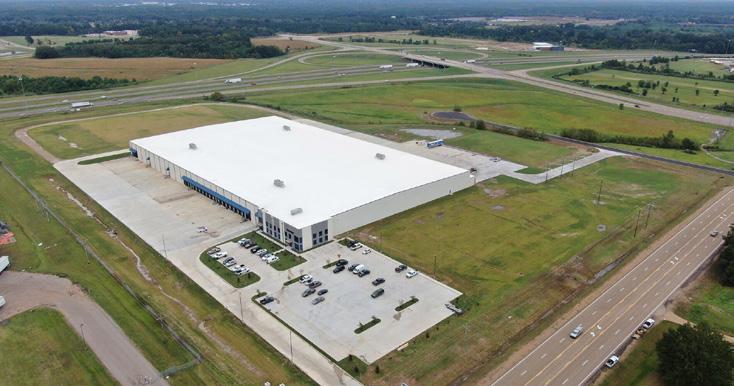
the past 10 years. Madison County has a diverse yet complementary group of communities, from the historic City of Canton to the rapidly growing lifestyle and residential areas of Ridgeland, Madison, and Gluckstadt, to Livingston and Flora with their refreshing reinvention of what an old-fashioned town can be. Each area has its own identity and appeal, but all with a dedication to quality.
Madison County is located at the intersection of two major interstates, less that a 6-hour drive from Dallas and Atlanta and less than a 3-hour drive from Memphis, New Orleans, and Birmingham.
Within just a short drive, many people enjoy the activities the Jackson metro has to offer such as over 560 restaurants, 58 parks, 639 churches, 485 retail establishments, 14 golf courses, and 31 museums.
Madison County Economic Development Authority (MCEDA) is pleased to announce that Amazon Web Services, Inc. (AWS) is constructing multiple data center campuses in two Madison County industrial parks. With a planned capital investment of $10 billion, AWS is the largest economic development project in Mississippi’s history. Additionally, the company will create at least 1,000 new jobs in Madison County. The new technology centered campuses will signal a new chapter in Madison County’s technological landscape. MCEDA and Madison County have strategically prepared its sites over the past five-plus years for speed-to-market allowing the County to land this economic development project. The county is an ideal space for technological development and its forward-thinking approach as showcased by the County’s readiness for AWS.
AWS is the world’s most comprehensive and broadly adopted cloud. These data centers will enable customers of all sizes and across all industries, such as healthcare, manufacturing, automotive, financial services, public sector, telecom, and more, to transform their businesses. Millions of customers, including the fastest-growing startups, largest enterprises, and leading government agencies—are using AWS to lower costs, become more agile and innovate faster. The new data centers will contain computer servers, data storage drives, networking equipment, and other forms of technological infrastructure used to power cloud computing. Opportunity thrives in Madison County – without the burnout. From billion-dollar investments to booming sectors like tech, logistics, and healthcare, this is a place where careers take off and commutes stay short. Whether you’re climbing the ladder or launching something new, you’ll find room to grow, support to succeed, and time left over to enjoy it all.
Madison County offers more than just a place to live – it offers a way to live well. With strong schools, short commutes, and a low cost of living, it’s where your lifestyle goals and career plans can grow side by side. Whether you’re drawn by the friendly neighborhoods, the local flavor, or the balance of opportunity and ease, this is a place where you can put down roots and thrive. All just minutes from the capital, but a world away from big-city stress.
For more information on all the opportunities in Madison County, please contact the Madison County Economic Development Authority at 601-605-0368 or visit their website at www.madisoncountyeda X
Strategically located at the crossroads of two major interstates (I-55 and I-20).
Regional Labor Force Draw: 588,713
Prime Age Labor Force Participation Rate: 83%
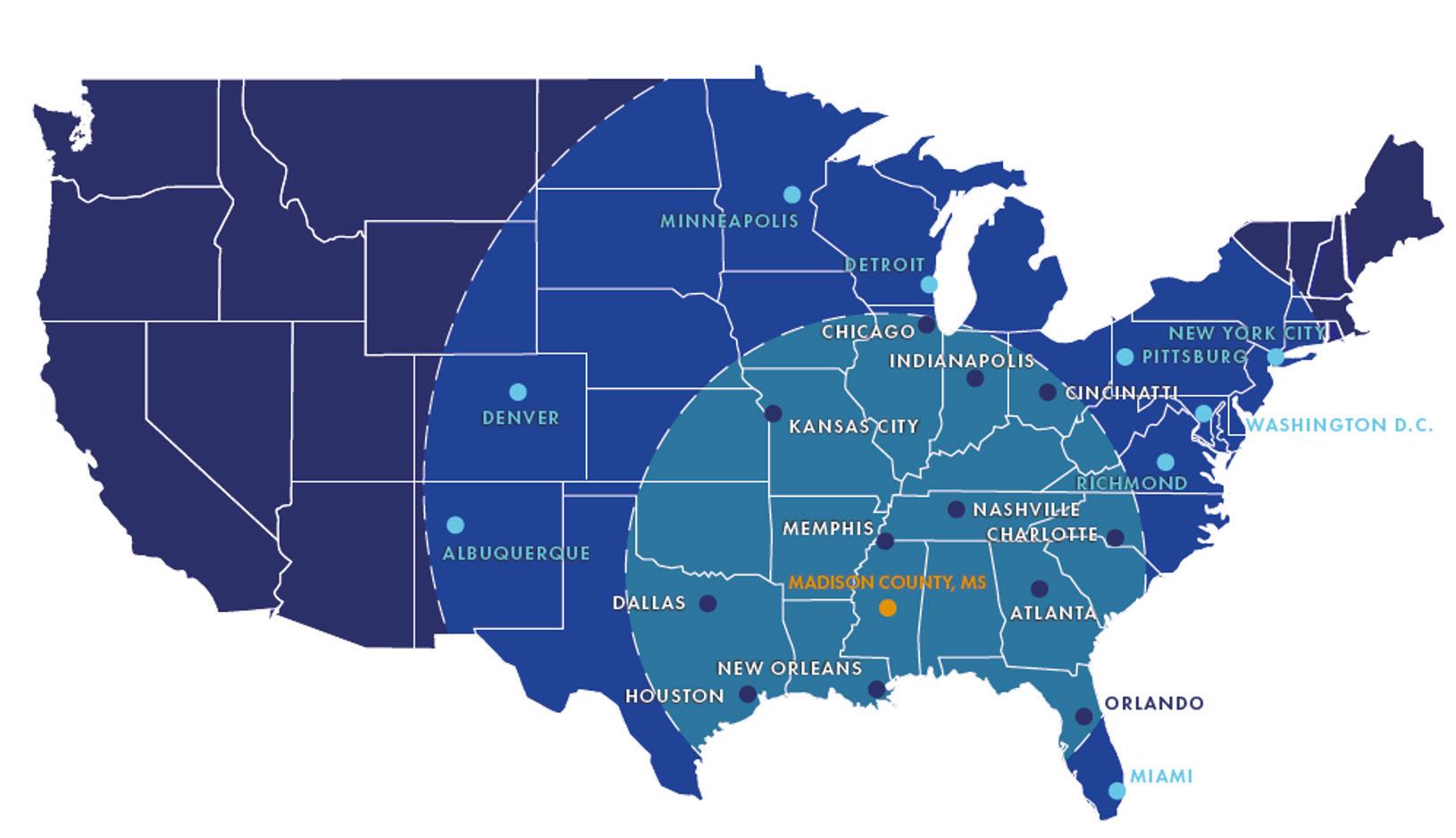








Arizona is strategically located in the southwest region of the United States, immediately accessible to three of the world’s largest economies – California (#8), Texas (#12) and Mexico (#15). In fact, Arizona is the only state in the nation within a day’s drive of all those major world markets.
Major interstates, freeways, and transcontinental and interstate railroads connect the state directly to dozens of major markets throughout the region. This infrastructure provides highly effective flow for people and products, including one-day truck haul routes between Arizona and California, Colorado, Nevada, New Mexico, Texas, and Utah as well as deliveries to and from Mexico. Trucks originating in Arizona are capable of reaching 65 million people in a one-day drive, making market access particularly convenient.
For companies doing business on a global level, Arizona’s two international airports are located in Phoenix and
Tucson. One of the largest in the world, Phoenix Sky Harbor International Airport transports more than 800 tons of cargo daily and more than 300 thousand tons annually.
In addition, the Phoenix airport serves more than 100 cities with nonstop flights which include international destinations. You can fly to Los Angeles, San Diego, Las Vegas or Santa Fe in less than an hour. You can arrive in other major markets including Dallas, Denver or San Francisco in under two hours, or in a third to get to Chicago, Houston, Mexico City, or Vancouver, Canada.
The state’s lack of natural and weather-related disasters, such as earthquakes, hurricanes, blizzards, and tornadoes makes Arizona a convenient location for companies that require employees and market access to be available consistently throughout the year. Along with the steady climate, Arizona is so geologically sound that it’s home to America’s largest nuclear generating facility. Palo Verde Nuclear Station provides businesses continual access to clean, reliable energy.



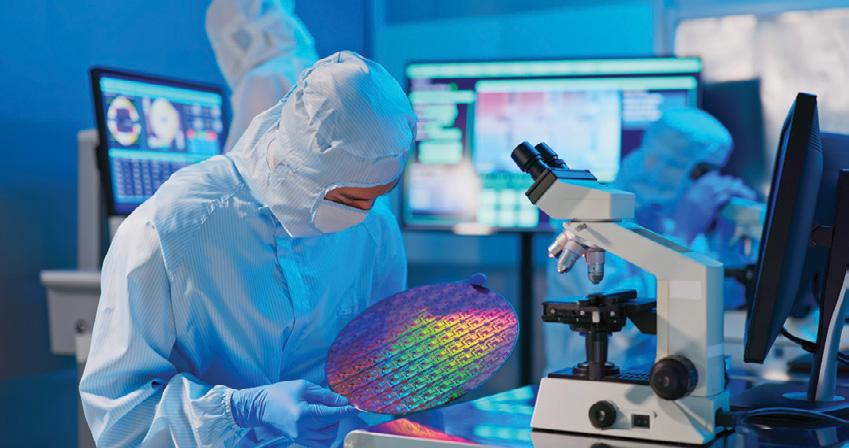
For more information on Arizona, please contact the Arizona Commerce Authority at 602-845-1200 or visit their website at www.azcommerce.com .
ARIZONA: Peoria is the Place — Semiconductors, Healthcare, and the Future of Innovation

In the northwest corner of the Phoenix metro, the City of Peoria is quickly becoming one of Arizona’s most strategic hubs for innovation, and it's not by accident. From cutting-edge semiconductor investments to a critical push for advanced healthcare infrastructure, Peoria is shaping itself into a cornerstone for the state’s future economy.
Earlier this year, Peoria made a calculated move that’s already paying off. The city purchased 834 acres of State Land near Loop 303, just minutes from Taiwan Semiconductor Manufacturing Company’s $40 billion chip fabrication plant, to develop the Peoria Innovation Core (PIC). The city has already begun building key infrastructure to make the area shovel-ready, generating strong interest among developers.
A key anchor of this area is Amkor Technology, which is constructing the most advanced semiconductor packaging facility in the United States. This development positions Peoria as a critical hub in the global semiconductor supply chain and sets the stage for additional investment from other high-tech companies.
And this is just the beginning.
With Greater Phoenix ranked #1 in the country for semiconductor supply chain investment and Arizona among the top three states for semiconductor employment, Peoria sits in the right place at the right time. Educational institutions like Arizona State University and WestMEC are fueling the pipeline with skilled workers, while the city itself is investing nearly $500 million in infrastructure to support long-term industrial growth.
But semiconductors aren’t the only transformative opportunity on Peoria’s horizon. A different kind of infrastructure gap is demanding attention: healthcare.
Despite a rapidly growing and affluent population in North Peoria, the area remains significantly underserved by medical
services. With an average household income of $116,000 and home values exceeding $585,000, North Peoria is attracting families, professionals, and retirees in record numbers. Yet access to primary, specialty, and acute care remains limited, forcing residents to drive long distances for basic services.
This healthcare void is not just a challenge. It’s an opportunity.
To meet this urgent need, Peoria is now seeking a strategic healthcare partner to anchor a 50-acre, city-owned site envisioned for a full-service, integrated medical campus. The project aims to bring together acute care, outpatient services, specialty clinics, and workforce development programs into a single, coordinated ecosystem. Just as it has done with HonorHealth and Valleywise Healthcare in other areas of the city, Peoria is ready to collaborate and invest in long-term solutions.
And the timing couldn’t be better.
North Peoria is on track for sustained population growth, with projections exceeding 5% annually over the next seven years. The area’s accessibility, bolstered by nearly 10 miles of Loop 303 frontage, makes it an ideal location for both healthcare and advanced manufacturing facilities. And with more than 1.5 million people living within a 30-minute drive, the reach and impact of such developments are enormous.
From advanced microchips to life-saving care, Peoria’s story is one of bold investments, deliberate planning, and meaningful partnerships. The city understands that innovation isn’t confined to a single sector. It’s about building the ecosystem that makes big ideas possible.
So whether you’re a global semiconductor firm looking to expand, or a healthcare provider ready to lead, Peoria is more than ready to partner. The infrastructure is in place. Through thoughtful planning and responsible management, our city is prepared to provide the water needed to welcome new businesses and support future development. The talent pipeline is growing. And the vision is clear: Peoria is building the future right now.
To learn more about opportunities in Peoria, contact the City of Peoria Economic Development Services team at 623.773.7735 or business@peoriaed.com X


Gov. Michelle Lujan Grisham signed in September an agreement between the state of New Mexico and Defense Advanced Research Projects Agency (DARPA) to establish the Quantum Frontier Project, a new partnership designed to accelerate the development, testing, and validation of emerging quantum technologies.
The agreement is part of the Quantum Benchmarking Initiative (QBI). The Quantum Frontier Project will leverage the state’s universities, private-sector innovators, and world-class national laboratories to expand research, engineering, and testing efforts that directly support QBI’s ambitious mission: determining whether utility-scale quantum computing can be achieved by 2033.
“Quantum computing may prove to be the most
consequential technology of this century for national security and breakthrough innovations,” said Gov. Lujan Grisham. “New Mexico, having once pioneered applied physics, is excited to partner with DARPA on the QBI program to stay at the forefront of frontier technology and bring our world-class research, development, and entrepreneurial ecosystem into the fold.”
“This agreement makes it clear: New Mexico is stepping up to lead in the industries of tomorrow,” said Economic Development Secretary Rob Black. “Quantum computing means jobs, innovation, and a stronger economy for our state, and we intend to seize this moment in the global race.”
Under the framework agreement, DARPA and New Mexico may provide matching contributions of up to $120 million total over four years. Investments will be directed toward research, infrastructure, and independent verification efforts that advance QBI and the Quantum Frontier Project.
“New Mexico is the latest state to enter into partnership on QBI, and we are eager to leverage new facilities and expertise
as we test and evaluate claims from a number of quantum computing companies about their progress in building a useful quantum computer,” said Joe Altepeter, QBI program manager. “World-class national laboratories in New Mexico, such as Sandia and Los Alamos, are already a part of QBI’s independent verification and validation team, and we look forward through the Quantum Frontier Project to tapping into more of the state’s quantum R&D and testing infrastructure to help us determine whether quantum computers will work or not.”
This announcement comes at a time of rapid momentum for New Mexico’s quantum sector. Last month, EDD announced the selection of Roadrunner Venture Studios as the state’s partner to deploy $25 million to accelerate quantum innovation and commercialization in the state. This week, Albuquerque is hosting IEEE Quantum Week, bringing together leading scientists, engineers, and entrepreneurs from around the world.
The DARPA–New Mexico Quantum Frontier Project builds on similar QBI partnerships with Illinois (Quantum Proving Ground) and Maryland (Capital Quantum Benchmarking Hub). New Mexico’s strong foundation in advanced research, combined with state investment and industry partnerships, positions it as a national leader in the race to unlock quantum computing.
For more information on all that’s happening in New Mexico, please contact the New Mexico Economic Development Department at 505-827-0300, email at info@edd.newmexico.gov or visit their website at www.edd.newmexico.gov
You’ve likely heard of Roswell, New Mexico from the famed and widely speculated UFO incident that occurred in 1947. The city of Roswell is a welcoming, vibrant, and expanding community, with a population of nearly 50,000 people. When considering the entirety of Chaves County, which includes Roswell, Dexter, Hagerman, and Lake Arthur, the population consists of over 60,000 residents. The diverse economy of Roswell-Chaves County is supported by industries in tourism, agriculture, aviation, manufacturing, and energy.
Annually, Roswell hosts thousands of visitors from all over the world during the UFO Festival, where tourists embark on extraterrestrial adventures, entertainment, lectures, contests, and even a 5k/10k walk and run, dubbed the “Alien Chase.” The International UFO Museum & Research Center welcomes over 220,000 visitors each year and promises to provide an out-of-the-world experience! During September 2025, Roswell, which was selected as the new homebase for the National Championship Air Races (NCAR), hosted the five-day event, drawing large crowds to enjoy the “fastest motorsport in the
world.” NCAR will be hosted yearly in September, leaving a profound, positive increase to the economic footprint to the region.
Agriculture is a vast economic driver for Roswell and Chaves County, thanks in large part to the Roswell Artesian Basin, which serves as an essential water source for farming in the arid climate. Main areas of agriculture in the county include crops (pecans, hay and corn silage, cannabis), cattle and livestock, as well as dairy farms. Agriculture intersects with manufacturing for local employers in Roswell by providing high-wage jobs to the community. Leprino Foods, the largest mozzarella cheese plant in the world, supports the local economy by utilizing milk produced within Chaves County to manufacture one billion pounds of mozzarella cheese annually. In addition, USA Beef Packing in Roswell benefits from the cattle and livestock aspect of the agricultural industry.
Formerly serving as Walker Air Force Base, the Roswell Air Center (RAC) is not only the new location for the NCAR event, but it also provides maintenance, repair, and overhaul (MRO) services for various types of aircraft. MRO companies that provide economic based jobs include AerSale, CAVU Aerospace,


BiltWise Structures, which manufactures modular homes inside a 300,000 square foot warehouse. BiltWise Structures selected Roswell as part of their western expansion that will help serve housing needs in New Mexico, Texas, Colorado, and Arizona. Construction is currently underway in Roswell for a last-mile distribution Amazon warehouse that is anticipated to be completed in early 2026.
To learn more about the immense business possibilities and unique qualities in Roswell and Chaves County, please contact the Roswell-Chaves County Economic Development


























































New Brunswick is a desirable destination for domestic and foreign direct investment, boasting a strategic location, robust economic ecosystem, and welcoming business environment. New Brunswick offers unparalleled access to both North American and international markets, making it an ideal gateway for businesses seeking global connectivity. ......................................................................................
Located in Atlantic Canada, New Brunswick shares a border with the provinces of Quebec, Nova Scotia, Prince Edward Island, and the state of Maine (U.S.). New Brunswick provides same-day access to over 100 million consumers through:
• 2 year-round ice-free ports with rail and road access (Port of Saint John and Port of Belledune)
• Rail access with connections to three Class I railways –connecting to the United States, Canada, and Mexico.
• An extensive network of roads and highways connecting you to the United States eastern seaboard and the St. Lawrence corridor.
• 4 airports, 14 domestic destinations, 4 international destinations, and an international cargo hub.
From here, you can reach multiple continents within a single business day. Their optimal Atlantic time zone puts them four hours ahead of San Francisco, and four hours behind London, facilitating access to both European and North American markets.
New Brunswick has a skilled manufacturing workforce, with experience in traditional industries and an abundance of innovative technologies. When it comes to manufacturing and engineering talent, New Brunswick has you covered. Their Client Engagement Team can help you implement proven strategies to find the talent that meets your needs.
They aim to ensure their workforce is trained to support your industry by connecting you with their post-secondary institutions to develop curriculum designed to meet your needs.
According to KPMG, New Brunswick’s mid-sized cities ranked #2 most cost-competitive locations in North America for Technology Intensive Manufacturing (I.e., factory 4.0) and #3 in Systems Assembly and Manufacturing.
New Brunswick can save you money. A company looking to expand 100 employees into a 50,000 sq. ft. space in one of New Brunswick’s major cities can take advantage of a 13.4% overall cost savings compared to Ontario, 11% compared to Quebec, and 14.8% compared to the Canadian average.
New Brunswick is home to a dynamic advanced manufacturing

sector with expertise in aerospace and defense, consumer products, food and beverage, mining, oil and gas, and other industries.
World-class infrastructure, top-quality talent and industry-leading businesses make New Brunswick a Canadian hotspot for cybersecurity investment.
With an abundance of resources, unique assets, and a strategic position on Canada’s East Coast, New Brunswick is a leader in energy innovation.
New Brunswick offers competitive advantages in the Agritech industry through market access, a diverse energy mix, land and water access, low costs, and government partnerships.
With strengths in cybersecurity, digital transformation, digital media, robotic process automation, geomatics, ocean tech, digital health, telecommunications, and more, New Brunswick is the place to be for the ICT industry.
For more information on the advantages of New Brunswick, please contact OpportunitiesNB at 506-453-5471, Toll Free 855-746-4662 (North America), email info@onbcanada.ca or visit their website at www.onbcanada.ca
Nestled on the Bay of Chaleur, the Chaleur Region is ideally positioned for businesses looking to expand their reach. With direct access to highways, ports, and airports, the region offers reliable connections to North American and international markets. Imagine Chaleur provides the data and information businesses need to evaluate these opportunities with confidence

The Chaleur Region’s economy is built on a strong mix of traditional industries—forestry, fisheries, and manufacturing— combined with growing sectors such as tourism, health care, and renewable energy. Imagine Chaleur works alongside municipalities, employers, and partners to track trends, share insights, and highlight opportunities, giving decision-makers a clearer picture of the regional economy.
Entrepreneurship thrives in a setting where collaboration comes first. Local governments and economic development organizations are committed to creating an environment where ideas can take root.
Imagine Chaleur plays a bridging role, connecting businesses with resources, regulatory information, and community networks that can reduce barriers and spark new initiatives.


Talent is a critical driver of growth, and the Chaleur Region is home to a skilled, bilingual workforce supported by training programs through Collège Communautaire du Nouveau-Brunswick (CCNB) and other institutions. Imagine Chaleur regularly engages with employers and workers to gather data, identify labour force needs, and support workforce development planning—ensuring businesses have the information they need to attract and retain people.

Alongside economic opportunity, the Chaleur Region offers an exceptional lifestyle. From scenic coastline and outdoor adventure to a welcoming bilingual culture, the region is a place where professionals and families can thrive. By collecting and sharing data on housing, amenities, and community services, Imagine Chaleur helps align quality-of-life factors with workforce attraction strategies.
Sustainability and innovation are guiding principles in the Chaleur Region. Imagine Chaleur coordinates regional initiatives—such as housing assessment study, workforce development surveys, and tourism planning—providing the evidence base for both public and private decisions. This collaborative approach ensures growth is not only possible, but also sustainable.
The Chaleur Region is not simply a destination for business—it is a region where businesses, communities, and investors can make informed choices backed by solid data and regional support. Imagine Chaleur is here to provide the insights, connections, and resources that turn ideas into action. Together, we can imagine more. X
ANNOUNCES 300 NEW JOBS AS WALMART SELECTS GASTON COUNTY FOR STATE-OF-THE-ART FULFILLMENT CENTER
Company will invest $300 million in Kings Mountain
RALEIGH, NC - — Governor Josh Stein announced that Walmart, Inc. plans to open a new fulfillment center in Kings Mountain. The estimated $300 million investment will create more than 300 new jobs in Gaston County. The 1.2 million–square-foot facility, located at 799 Sara Lee Access Road, is expected to open in 2027.
“North Carolina offers global companies like Walmart a friendly business climate, strong workforce development programs, and a transportation network tailored to their logistics needs,”
said Governor Stein. “These advantages, and more, make North Carolina the top state to do business in the country.”
The new Walmart fulfillment center in Kings Mountain will ship large items such as patio furniture and lawnmowers directly to customers as soon as next-day.
$457 million to go into large power transformer production facility in South Boston, Virginia, creating 825 new jobs as part of the company’s broader $1 billion investment in U.S. expansion
RICHMOND, VA Governor Glenn Youngkin announced Hitachi Energy, a global leader in electrification, will invest $457 million to expand the company’s power transformer production facility in South Boston, Virginia, creating 825 new jobs in the Commonwealth.
The new facility will produce large power transformers, which support applications like high-voltage transmission, power generation, AI data centers, and large-scale industrial applications. Upon completion, the campus will be the largest manufacturing site for large power transformers in the United States.
“Thank you, Hitachi Energy, for trusting Virginia, again! Hard-working Virginians and a business-friendly environment are what first brought Hitachi Energy to the Commonwealth. Now, after years of success here, they are doubling down on that decision with this landmark investment in South Boston,” said Governor Glenn Youngkin. “Eight-hundred and twenty-five new jobs will be transformational for Southside Virginia, as will the power transformers those new hires are set to build. These transformers are critical to our Nation’s electrical grid and will be built right here in Virginia.”
Governor Youngkin continued: “We are also proud to announce a major workforce housing project to support Hitachi’s new employees. We are partnering with Halifax County and Virginia Housing to build 96 new homes supported by a grant from the Virginia Workforce Housing Investment Program.”
This expansion will help meet the Commonwealth’s rising energy demand and promote domestic access to critical grid technologies. The move also supports the power needs of American manufacturing and other sectors and much-needed grid expansion and modernization efforts. Collectively, these investments will create thousands of jobs, bolster electrical equipment supply chains in the U.S., and contribute to the development
“As our eCommerce business continues to grow, this new fulfillment center will play a critical role in helping us serve customers faster,”
said Karisa Sprague, senior vice president, Supply Chain, Walmart U.S. “We’re excited to join the Kings Mountain community and proud to create long-term career opportunities where associates can grow and build their future with Walmart.”
Walmart serves customers in North Carolina through more than 214 stores and Sam’s Clubs as well as seven supply chain facilities. Walmart employs more than 62,300 associates across the state. The retailer supports local businesses in North Carolina, spending more than $9 billion with North Carolina suppliers and supporting more than 88,000 supplier jobs in fiscal year 2025.
The new jobs will generate an estimated annual payroll impact in the community of more than $20 million per year. Spirit for three generations. For more information, visit the company’s website at www.KingsHawaiian.com, or find KING’S HAWAIIAN on Facebook, Instagram, and X (formerly Twitter).
of innovative technologies to enhance the security and resilience of the U.S. grid. The project will also be supported by a partnership of local and state government to jump-start workforce housing construction. Halifax County donated 10 acres of land near the Hitachi Energy facility, and a grant from Virginia’s new Workforce Housing Investment Program will speed up construction of 96 units of housing for workers and their families. Halifax County will waive permit and connection fees to enable housing construction.
“Power transformers are a linchpin technology for a robust and reliable electric grid and winning the AI race. Bringing production of large power transformers to the U.S. is critical to building a strong domestic supply chain for the U.S. economy and reducing production bottlenecks, which is essential as demand for these transformers across the economy is surging. As the global leader in electrification, Hitachi Energy is uniquely positioned to deliver critical power solutions for the American market,” said Andreas Schierenbeck, CEO of Hitachi Energy. “Our investments in expanding U.S. transformer manufacturing capacity—including at our new South Boston facility—are already creating good-paying American jobs, strengthening local communities, and reinforcing economic independence. At Hitachi Energy, we are deeply grateful for the leadership and support of the Trump administration, Governor Youngkin, Virginia’s General Assembly, and the Commonwealth’s congressional delegation, who came together to make this critical production capacity possible to power our energy future.”
Hitachi Energy is a global technology leader in electrification, powering a sustainable energy future with innovative power grid technologies with digital at the core. With over a century in pioneering mission-critical technologies like high-voltage transformers, automation, and power electronics, Hitachi Energy is addressing the most urgent energy challenge of our time –balancing soaring electricity demand, while decarbonizing the power system. With an unparalleled installed base in over 140 countries, Hitachi Energy co-creates and builds long-term partnerships across the utility, industry, transportation, data centers, and infrastructure sectors. Headquartered in Switzerland, the company employs over 50,000 people in 60 countries and generates revenues of around $16 billion.
AUSTIN, TX — Governor Greg Abbott announced that Lefko USA Inc. (Lefko) will locate their first U.S.-based manufacturing facility in New Braunfels. Lefko, a subsidiary of Centrik Capital, Inc., specializes in custom blow molding for medium to large plastic parts serving the recreation, powersports, medical, industrial, and trucking sectors. The advanced manufacturing facility will create 149 new jobs and more than $15 million in capital investment. A Texas Enterprise Fund (TEF) grant of $968,500 has been extended to Lefko. In addition, the company has been offered a $19,000 Veteran Created Job Bonus.
“Texas manufacturers keep industries moving forward,” said Governor Abbott. “This $15 million investment by Lefko to establish their first U.S.-based advanced manufacturing facility in New Braunfels will create good-paying jobs for hardworking Texans. Thanks to our skilled and growing workforce, easy access to domestic and international markets, and the best business climate in America, ‘Made in Texas’ has never been a more powerful global brand.”
“We are proud to grow our operations in New Braunfels and the state of Texas,” said Lefko CEO Eric Blondeau. “Texas’ commitment to advanced manufacturing and its central location give us the competitive advantage we need to serve both national and global markets. The collaboration with New Braunfels city leaders and the State of Texas made the difference in our final choice, and we look forward to a long and successful future here.”
“Lefko’s decision to make New Braunfels home for their first U.S. manufacturing facility is a tremendous blessing for our region,” said Representative Carrie Isaac. “These 149 new jobs and significant capital investment will strengthen our local economy, support Texas families, and demonstrate once again that our state is the best place to do business. Keeping our economy strong and our job market thriving is what keeps the American Dream alive. A strong workforce keeps Texas the envy of our nation. Welcome to Central Texas, Lefko USA — we are proud to share our values with you as you grow here.”
“We are thrilled to welcome Lefko to New Braunfels,” said Mayor Neal Linnartz. “Their investment here not only speaks volumes about the competitiveness of our community, but more importantly, it means real jobs and new opportunities for New Braunfels families. We look forward to working together with Lefko to make sure that our city benefits in ways that strengthen our economy and our quality of life.”
ATLANTA, GA — Governor Brian P. Kemp announced that JS Link America Inc., a wholly owned U.S. subsidiary of JS Link, intends to invest about $223 million to establish a new rare earth permanent magnet manufacturing facility in Columbus. The new facility will create more than 520 new jobs in Muscogee County, Georgia.
“JS Link America strengthens Georgia’s role in securing the U.S. supply chain in industries such as aerospace, mobility, and energy,” said Governor Brian Kemp. “We are excited for the continued growth of manufacturing in west Georgia, and congratulations to Columbus-Muscogee County for this opportunity.”
Founded originally in 2000, JS Link is a Korean biotechnology company that specializes in research and development. The company has expanded its business to include the production of permanent magnets, which are a critical component in a vast array of industries including automobiles, wind turbines, elevators, home appliances, medical industry, robotics, Urban Air Mobility (UAM), data centers, and consumer electronics, as well as defense systems. JS Link is nearing completion on a similar permanent magnet facility in Yesan, Korea, with an anticipated a pilot production run in September and annual capacity of 1,000 tons.
“From day one, Georgia’s economic development team, local community leadership in Columbus, and Georgia Power all welcomed JS Link with a pro-business approach. Georgia’s universities with their engineering programs also provide ready-made
labor force for JS Link America,” said Mr. Jun Y. Lee, JS Link America Inc.’s CEO. “JS Link plans to be a part of a value chain focused entirely on Western nations to meet the growing demand for permanent magnets sourced from strategic allies such as Korea. This new chain will cover the entire process, from the procurement of essential rare-earth materials to the final manufacturing of the magnets.”
JS Link America Inc.’s new manufacturing facility will be located at the Muscogee Technology Park in Columbus. The 130,000-square-foot facility is predicted to have an annual production capacity of 3,000 tons. Operations are expected to begin in late 2027. The company will be hiring for engineering, production, construction, administrative, and management roles. Interested individuals can learn more about working at JS Link America Inc. at en.jslink.co.kr.
With biotech and permanent magnet divisions, JS Link is a KOSDAQ listed Korean company that is aiming to be a pioneer in the evolving global rare earth value chain, leveraging its world class expertise in rare earth permanent magnet manufacturing technology. JS Link will continue to build a sustainable future with its permanent magnets that are critical components across a wide range of industries, including hybrid and electrical vehicles, wind generators, elevators, fighter jets, air conditioners, refrigerators, and Urban Air Mobility (UAM).
MARKDALE, ONTARIO — Invest Ontario is proud to support a milestone investment by Chapman’s, the largest independent ice cream manufacturer in Canada, as this homegrown company undertakes a major expansion of its operations in Markdale, Ontario.
This investment of over $200 million will allow Chapman’s to introduce products never before sold in Canada to consumers, while also positioning the company to develop its export business to meet growing demand in international markets.
Creating 200 new jobs, the project adds a 175,000 square-foot facility with three new production lines coming online initially and three more planned in the years ahead.
“This expansion comes at a critical time for Chapman’s. The competition from multinationals has only increased in recent years, and this project will help us to establish a stronger competitive ground,” said Ashley Chapman, COO of Chapman’s, “We are grateful to the province and Invest Ontario for the support on this project. Additional funding from Invest Ontario has allowed us to build a bigger facility and support higher paying jobs for Canadians.”
Leading food manufacturers like Chapman’s leverage both Ontario’s strong agricultural sector and the province’s skilled workforce and expertise in advanced manufacturing. The expansion will feature state-of-the-art equipment and automation technology to boost capacity, improve efficiency and support staff upskilling.
All of Chapman’s products are made in Markdale using milk and cream exclusively sourced in Canada. The expansion will create new opportunities for Canadian suppliers, contributing to the growth of the agri-food economy as more Ontario-made food products are being manufactured and supplied across the country and internationally.
Founded in 1973, Chapman’s remains a family-run business and currently employs over 800 full-time workers in Markdale, making it the community’s largest employer. Another 200 will be added with this
MOBILE, AL. —The Alabama Port Authority recently celebrated the completion of the Mobile Harbor Modernization Project, marking the achievement of a 50-foot channel depth that officially makes the Port of Mobile the deepest container terminal in the Gulf of America.
The event, held at APM Terminals Mobile, drew hundreds of customers and stakeholders, bringing together federal, state, and local leaders who helped make the project possible.
“This project is a game changer for Alabama, which is why I made it a key component of our Rebuild Alabama plan,” said Governor Kay Ivey. “A deeper channel means stronger trade, more jobs, and a brighter future for our state. What’s more is this achievement reflects a model partnership: the federal authorization and funding, a strong, $150 million state match through the Rebuild Alabama Act, and private-sector investments from AP Moller Maersk are all proof that
expansion, deepening the company’s long-term commitment to the regional economy.
The investment will be supported with a loan of up to $27 million through the Invest Ontario Fund.
“Chapman’s is a household name in Canada and an Ontario success story. Through this expansion, they are reinforcing their roots at home while opening doors to the world market,” said Khawar Nasim, CEO of Invest Ontario. “We’re proud to support this Ontario business that will create opportunities for Ontarians and strengthen the province’s supply chain resilience.”
Invest Ontario is a dedicated partner to businesses seeking strategic growth in Ontario. The Agency remains focused on supporting investments that create meaningful jobs and build a stronger, more competitive economy for all Ontarians.
Invest Ontario is the dedicated agency for investment attraction in the province. We serve as global businesses’ partner and one-window access to Ontario, providing expertise and tailored services throughout their investment journey. With a focus on the advanced manufacturing, life sciences and technology sectors, we are committed to securing strategic investments that create jobs, generate returns to the province and drive Ontario’s long-term economic growth and global competitiveness.
Chapman’s is a Canadian family owned and operated ice cream maker located in Markdale, Ontario. The award-winning brand has over 200 products in its portfolio, including ice cream, frozen yogurt, sorbet, water ice Lolly treats and a wide variety of single-serve novelties. Chapman’s products are sold exclusively in Canada, in every province and territory, from coast to coast to coast. The company is known for offering frozen treats for various dietary restrictions: including lower calorie, gluten free, lactose free, peanut free, nut free, egg free and no sugar added products. For more information, visit chapmans.ca.
when Alabama aligns vision with execution, we deliver results.”
Since the 50 ft depth was achieved on October 3, 2025, the Port has seen all coal vessels take advantage of the additional depth. APM Terminals Mobile, which routinely handles 9,000-10,000 TEU vessels, anticipates calls from ships carrying 12,000-16,000 TEUs, with the option to handle even larger vessels as needed.
“With a 50-foot channel, the Port of Mobile now stands as the deepest container port in the Gulf of America,” said Alabama Port Authority Interim Director & CEO, Doug Otto. “This investment isn’t just about depth—it’s about efficiency. The project’s enhancements allow for two-way vessel traffic and create nearly three miles of passing lane, improving safety, reducing transit times, allowing for more cargo, and delivering faster turnarounds for our customers. These capabilities strengthen the Port’s competitive position and make a compelling business case for shippers choosing Alabama as their gateway for global trade.”
ATLANTA, GA — Governor Brian P. Kemp announced that Underwood Ammo will invest $41 million in building a new manufacturing facility, creating 120 new jobs, in Effingham County.
“Georgia is the nation’s premier destination for manufacturers, including the defense and sporting sectors,” said Governor Brian Kemp. “This sector has made several key investments in our state in recent years, with companies like Underwood Ammo creating quality jobs and investing in our communities like Effingham County.”
Based in the United States, Underwood Ammo produces handgun and rifle ammunition for hunting and self-defense.
“Today’s announcement is timely news for the people of South Georgia as we continue to face the impacts of job loss due to paper plant closures across the region. This project reaffirms Effingham
New manufacturing facility to be located near Charlottesville, in Albemarle County, Virginia will develop and manufacture a broader range of medicines including weight management, metabolic and cancer technologies Facility marks cornerstone of $50 billion investment in medicines R&D and manufacturing in America
AstraZeneca announced that it will invest $4.5 billion in its new manufacturing facility in Virginia, a proposed increase of $500m to support the enhanced manufacturing capability of a broader range of medicines including cancer treatments. This is part of the historic $50 billion investment announced in July 2025. The new facility will be located at Rivanna Futures in Albemarle County and is expected to create approximately 3,600 direct and indirect jobs, powering economic growth and Virgina’s leadership at the forefront of life sciences innovation.
The manufacturing facility is expected to create 600 highly skilled jobs in Virginia including engineers, scientists, process facilitators which includes an additional 100 jobs as a result of the expansion. A further 3,000 jobs will be created to support the construction of the facility including engineers, skilled trades and construction workers. It will be at the forefront of technological innovation, leveraging AI, automation, and data analytics to optimise production.
The new facility will produce drug substance for AstraZeneca’s weight management and metabolic portfolio, including oral GLP-1, baxdrostat, oral PCSK9 and combination small molecule products. Today, the Company is announcing it has expanded the scope to also include state-of-the-art manufacturing for our leading antibody drug conjugate (ADC) cancer portfolio. Work will start immediately with the facility expected to be operational in the next four to five years. This investment
County’s strong support for business investment and job creation,” said Speaker Jon Burns. “We’re excited to welcome Underwood Ammo to Effingham County and eagerly anticipate the job opportunities that will be made available for our citizens.”
“Today marks an important milestone in the history of Underwood Ammo,” said Kevin Underwood, President and Founder of Underwood Ammo. “Our focus has always been on growth to better serve our customers, and this investment in Effingham County positions us for long-term success. We are thankful to the State of Georgia and local leaders for their partnership and for welcoming us into the community.”
Underwood Ammo’s new manufacturing and assembly facility will be located at the Savannah Portside International Park. Construction on the facility is expected to begin in 2026. Hiring for positions in operations, maintenance, and assembly is expected to begin in 2027. To learn more about Underwood Ammo, visit underwoodammo.com.
will bring critical medicine manufacturing capabilities to the United States and offers assurance from a national security and health sovereignty perspective.
Dr. Mehmet Oz, Centers for Medicare & Medicaid Services Administrator, said: “We cannot truly be a wealthy nation without being a healthy nation. Today’s groundbreaking demonstrates the Trump Administration’s commitment to onshoring drug manufacturing and strengthening supply chains to improve Americans’ access to medication. I congratulate AstraZeneca for their investment and invite other foreign manufacturers to follow suit.”
Governor Glenn Youngkin, Commonwealth of Virginia, said: “AstraZeneca’s $4.5 billion investment is the largest in the company’s history and a game-changer for American drug manufacturing. The investment is set to create 3,600 jobs in Virginia, strengthening America’s ability to produce life-saving medicines. Thanks to programs like the Virginia Business Ready Sites Program and the Virginia Talent Accelerator Program, AstraZeneca is going to be able to hit the ground running. That means better jobs, better medicine, and better opportunities for the people of Virginia.”
Pascal Soriot, Chief Executive Officer, AstraZeneca, said: “With our $4.5 billion investment in Virginia, the largest in AstraZeneca’s history, we are not only building a state-of-the-art manufacturing facility, but also driving life sciences innovation and economic growth. This new facility will create thousands of jobs and strengthen America’s national security and health sovereignty. I also want to thank Governor Youngkin and his team for their energy and vision. We have found in Virginia an amazing team that moves at incredible speed to build a better future for this Commonwealth and the American people.”
The Virginia Economic Development Partnership worked with Albemarle County and the General Assembly’s Major Employment and Investment Project Approval Commission to secure the project for Virginia.
Nuclear generator company to invest $280 million in Oak Ridge, utilize state’s Nuclear Energy Fund
OAK RIDGE, TN — Tennessee Gov. Bill Lee, Department of Economic and Community Development Commissioner Stuart C. McWhorter and Radiant officials announced the company has selected Tennessee for a $280 million investment that will expand the company’s nuclear manufacturing and research and development (R&D) to Oak Ridge, Tennessee.
Through the project, Radiant will create 175 new jobs in Roane County that will directly support the development and mass production
TEMPE, AZ — Applied Materials, Inc. and Arizona State University (ASU) today marked the official opening of the Materials-to-Fab Center, a shared world-class $270 million research, development and prototyping facility inside the university’s MacroTechnology Works at ASU’s Research Park in Tempe. A ribbon-cutting event was held at the Center as semiconductor industry leaders from around the globe gathered in nearby Phoenix for the SEMICON West conference.
Applied Materials executives, including Dr. Prabu Raja, President of the Semiconductor Products Group, and ASU President Michael Crow were joined at the ribbon-cutting by Arizona Governor Katie Hobbs and other government and city leaders to highlight the benefits that the MTF Center will bring to Arizona and the entire semiconductor industry.
“The work of advancing discovery and with it, the American semiconductor manufacturing industry, is of vital importance to the nation from both an economic competitiveness and a national security perspective,” said Arizona State University President Michael Crow. “The alliance between a global industry leader like Applied Materials and a leading research university like ASU and the work that will be done in the Materials-to-Fab Center will lead to breakthroughs and acceleration that enable chip manufacturers in the United States to lead the world in developing the technology that we need today and in the future.”
The Materials-to-Fab Center is designed to accelerate the transfer of innovations from ideation to fab prototype by bringing Applied Materials’ state-of-the-art semiconductor manufacturing equipment into a collaborative environment where the university, industry partners, startups, government entities and other academic institutions can work together.
Dr. Prabu Raja, President of the Semiconductor Products Group at Applied Materials, said, “Universities are the foundation of America’s semiconductor innovation pipeline, and we look forward to bringing together ASU’s world-class engineering teams with Applied Materials technologists and ecosystem partners at the Materials-to-Fab Center. These collaborations will focus on accelerating development of new chip technologies that are crucial to U.S. leadership in AI, high-performance computing and other megatrends shaping the future.”
Applied Materials is the largest U.S. producer of semiconductor manufacturing equipment. Its tools are used to produce virtually every new
of Radiant’s Kaleidos. Upon completion of the facility, this machine will be the world’s first one-megawatt portable nuclear generator capable of generating power in remote areas and providing resilient power options for military bases or disaster-relief scenarios.
Radiant is the sixth company to locate in Tennessee utilizing the Nuclear Energy Fund.
The $50 million fund was in Gov. Lee’s recommended 2023-2024 budget and approved by the Tennessee General Assembly. An additional $10 million was allocated and approved in the state’s budget during both the 2024 and 2025 legislative sessions, bringing the fund’s total to $70 million since its inception
chip in the world. The company’s major U.S. production facilities are located in Texas, Massachusetts, Montana, and a new site under development in Chandler, Arizona. The centerpiece of Applied’s research and development initiatives is the EPIC Center in Silicon Valley. On track to open in 2026, the EPIC Center will be the world’s largest and most advanced facility for collaborative semiconductor process technology and manufacturing equipment R&D.
Arizona State University has emerged as one of the nation’s leading universities in helping to shape the future of American microelectronics. As the recipient of several large investments from state, federal and private sector stakeholders, ASU conducts work across the entire microelectronics ecosystem – from front-end innovation to advanced packaging and large-scale manufacturing. With the largest engineering school in the country – approximately 33,000 students – ASU is also a driving force behind workforce and talent development.
“The Materials-to-Fab Center is a marriage made for Arizona and something that will benefit the entire region,” said Arizona Governor Katie Hobbs. “Applied Materials is an industry leader that already has a presence in the state with many of its customers invested in doing work within the ecosystem that is growing here and Arizona State University is a powerful force behind all the work being done, producing both the people who will lead this industry into the future and the ideas that will shape its progress. I am grateful to the Arizona Commerce Authority for helping this all come together and very excited to see this contribution to our economy coming to realization.”
The MTF Center builds on Applied Materials’ existing presence at ASU’s MacroTechnology Works facility as well as the research already being funded by the company involving ASU faculty and students. The Center is also already making contributions to ASU projects awarded through the CHIPS and Science Act for the Southwest Advanced Prototyping (SWAP) Hub, which is advancing rapid translation of technologies for national defense and the SHIELD USA project, which is focused on advanced packaging technologies.
Arizona is one of the nation’s key centers of microelectronics activity – home to some of the nation’s leading semiconductor producers and suppliers, major defense contractors, world-class universities and research institutes, and a vibrant startup community. The MTF Center will be an asset to small and large companies across the state and the Southwest region and a key capability for connecting ongoing investments in research and manufacturing.

58 INC.
Amy Sturdivant


Tuscaloosa County Economic Development Authority
Justice Smyth
1126 County Services Drive
Pelham, AL 35124
205-620-6658
asturdivant@58inc.org www.58inc.org
Cullman Economic Development Agency
Dale Greer
P.O. Box 1009
Cullman, AL 35056
256-739-1891
daleg@cullmaneda.org www.cullmaneda.org
Gadsden-Etowah Industrial Development Authority
David Hooks
Executive Director
1 Commerce Square Gadsden, AL 35901 256-543-9423 davidhooks@gadsdenida.org www.gadsdenida.org

Elmore County Economic Development
Cary Cox P.O. Box 117
Wetumka , AL 36092 334-514-5843
cary.cox@elmoreeda.com www.elmoreeda.com
Northwest Alabama EDA
Tom Wisemiller
4020 U.S. Highway 43
Guin, AL 35563
205-468-3213
twisemiller@northwestalabameda.org www.northwestalabamaeda.org
Executive Director P.O. Box 2667 Tuscaloosa, AL 35403 205-349-1414 info@tcoeda.com www.tcoeda.com

City of Flagstaff Economic Development
Jeff McCormick
Economic Development Manager
City of Flagstaff 211 W. Aspen Avenue Flagstaff, AZ 86001
Office 928-213-2966
jmccormick@flagstaffaz.gov www.flagstaffaz.gov

Mesa Gateway Airport Authority
Ryan Smith
Director Communications and Government Relations 5835 South Sossaman Road Mesa, Arizona 85212-0919
Office: 480-988-7617
Cell: 480-550-1326
rsmith@gatewayairport.com www.gatewayairport.com

City of Peoria Economic Development
Maria Laughner, Director 9875 N. 85th Avenue
Peoria, AZ 85345 623-773-7338
maria.laughner@peoriaaz.gov www.peoriaed.com
Pinal Alliance for Economic Growth
Patti King
Executive Mgr. 17235 N. 75th Avenue Suite D-145
Glendale, AZ 85308
520-836-8686
pking@pinalalliance.org www.pinalalliance.org
Salt River Project (SRP)
Karla Moran P.O. Box 52025 Phoenix, AZ 85072-2025
602-236-2396
Karla.moran@srpnet.com www.powertogrowphx.com

City of Surprise
Mike Hoover 16000 N Civic Center Plaza Surprise, AZ 85374 623-222-3328
Mike.hoover@surpriseaz.gov www.surpriseaz.gov


Ouachita Partnership for Economic Development
James Lee Sillman
Executive Director 625 Adams Aveune Camden, AR 71701 870-836-2210 870-836-8899 (f) caidcark@yahoo.com www.teamcamden.com
Clarksville Economic Development
Steve Houserman 205 Walnut Street, Clarksville, AR 72830 479-754-6486 shouserman@clarksvillear.gov www.clarksvillear.gov

Mississippi County Economic Development
Clif Chitwood 4701 Memorial Drive Blytheville, AR 72315 870-532-6084
clif@cottontosteel.com www.cottontosteel.com


Greater Irvine Chamber
Laura Perdew
36 Executive Park Suite 100 Irvine, CA 92614 949-502-4122
lperdew@irvinechamber.com www.irvinechamber.com
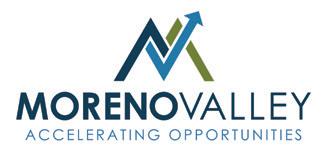
City of Moreno Valley
Economic Development
Mike Lee
Economic Development Director 14177 Frederick Street Moreno Valley, CA 92553 951-413-3460 mike@moval.org www.morenovalleybusiness.com

City of Ontario
Economic Development
Jennifer McLain Hiramoto Economic Development Director 303 East B Street Ontario, CA 91764 909-395-2295
JHiramoto@ontarioca.gov www.ontariothinksbusiness.com

Port of Long Beach
Stephanie Montuya-Morisky 415 W. Ocean Boulevard Long Beach, CA 90802 562-283-7700
stephanie.montuya-morisky@polb.com www.polb.com


City of Canon City
Rick Harrmann
128 Main Street Canon City, CO 81212
719-276-5279
rlharrmann@canoncity.org www.canoncity.org

City of Fountain Economic Development Commission
Kimberly A. Bailey
Economic Development/ Urban Renewal Director
116 S. Main Street Fountain, CO 80817
719-322-2056 kbailey@fountaincolorado.org www.fountaincolorado.org

City of Titusville
Nicholas Gow 555 South Washington Avenue
Titusville, FL 32796-3584
321-567-3774
economicdevelopment@titusville.com www.YEStitusvilleFL.com

Grand Junction Economic Partnership
Curtis Englehart, Executive Director 122 N. 6th Street Grand Junction, CO 81501 970--245-4332 curtis@gjep.org www.gjep.org


Town of Berlin
Chris Edge, Director 240 Kensington Road Berlin, CT 06037
860-828-7005
cedge@town.berlin.ct.us www.town.berlin.ct.us


Kent Economic Partnership
Linda Parkowski, Executive Director 555 Bay Road Dover, DE 19901
302-678-3057 info@ccede.com www.choosecentraldelaware.com

Wilmington Economic Development
Sean J. Park 800 N. French St., 3rd Floor Wilmington, DE 19801
302-576-2128
sjpark@wilmingtonde.gov www.wilmingtonde.gov


Enterprise Florida, Inc. 800 North Magnolia Avenue, Suite 1100 Orlando, FL 32803
407-956-5600 www.enterpriseflorida.com
Greater St. Petersburg Area Economic Development Corporation
J.P. DuBuque
President and CEO
100 2nd Ave N Ste 130 St. Petersburg, FL 33701
727-388-2906
jpdubuque@stpeteedc.com
StPeteEDC.com/BurgBiz
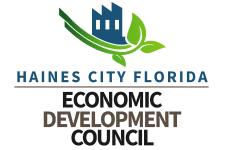
Haines City Economic Development Council, Inc.
Cyndi Jantomaso, MEDP
President/CEO
Post Office Box 3845
Haines City, FL 33845-3845
863-422-2525
cyndi@hainescityedc.com www.hainescityedc.com

Hernando County Office of Economic Development
Valerie M. Pianta, MEDP, Economic Development Director 15800 Flight Path Drive
Brooksville, FL 34604
352--540-6400
vpianta@hernandocounty.us www.hernandobusiness.com

Holmes County Development Commission
Joe Rone
Executive Director 106 E Byrd Avenue Bonifay, FL 32425
850-547-6154
jrone@holmesedc.com www.holmesedc.com

Indian River Chamber of Commerce
Mark Litten
Economic Development Director 1216 21st Street Vero Beach, FL 32960
772-567-3491
mark@indianrivered.com www.indianrivered.com
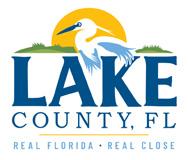
Lake County, Economic Development
Kathleen Dial, Director 315 W. Main Street Tavares, FL 32778 352-742-3925
Kathleen.dial@lakecountyfl.gov www.lakecountyfl.gov

Pinellas County Economic Development
Dr. Cynthia Johnson, EDFP, Director 13805 58th Street North, Suite 1-200 Clearwater, FL 33760
727-464-7332
cyjohnson@pinellas.gov www.pced.org

PortMiami
Suzy Trutie 1015 North American Way 2nd Floor Miami, FL 33132 305-347-4962
Suzy.trutie@miamidade.gov www.miamidade.gov
Orlando Economic Partnership
Destin Wells
Senior Vice President, Economic Development
200 S. Orange Avenue, Ste. 200 Orlando, FL 32801
407-902-2420
Destin.Wells@orlando.org InvestOrlando.org

Osceola County
Christina Morris, Economic Development Director 1 Courthouse Square, Suite 4400 Kissimmee, FL 34741 407-742-4207 (o) 407-687-8126 (c) christina.morris@osceola.org www.chooseosceola.com www.osceola.org

Pasco Economic Development Council
Bill Cronin, President & CEO 16506 Pointe Village Drive, Suite 101 Lutz, FL 33558
813-926-0827
813-926-0829 (f) bcronin@pascoedc.com pascoedc.com
Santa Rosa County EDO Shannon Ogletree
Executive Director
6491 Caroline Street, Suite 4 Milton, FL 32570-4592 850-623-0174
Shannon@santarosa.fl.gov www.santarosaedo.com

City of St. Cloud
Antranette Forbes, Economic Development Direcrector 1300 9th Street
St. Cloud, FL 34769
(407)957-7234
antranette.forbes@stcloud.org www.stcloud.org


City of College Park
Ginger Melton
3667 Main Street College Park, GA 30337 404-305-2052
404-305-2057 (f) gmelton@collegeparkga.com www.collegeparkga.com/

City of East Point
Maceo Rogers CEcD
2757 East Point Street
East Point, GA 30344
404-270-7057
jmrogers@eastpointcity.org www.eastpointcity.org

Forward Forsyth
Alex Warner
P.O. Box 1799
Cumming GA 30028
770-887-6461
770-842-1170
awarner@forwardforsyth.org www.forwardforsyth.org

Liberty County Development Authority
Brynn Grant, CEO
425 W. Oglethorpe Highway Hinesville, GA 31313
912-977-4147
brynn.grant@comegrow.global www.comegrow.global

Putnam Development Authority
Matt Poyner
Econmical Devleopment Director
117 Putnam Drive, Eaton, GA 31024
706-816-8099
mpoyner@putnamforward.dev www.putnamforward.dev
Valdosta-Lowndes County Development Authority
Niki Ogletree, President/CEO P.O. Box 5185
Valdosta, GA 31603-1963
229-259-9972
nogletree@buildlowndes.com www.buildlowndes.com


Champaign County Economic Development Corporation
Carly McCrory-McKay
Executive Director
1817 S. Neil Street, Suite 100
Champaign, IL 61820
217-478-0061
carly@champaigncountyedc.org www.champaigncountyedc.org

City of Litchfield Ecnomic Development
Breann Vazquez
120 E. Ryder Street Litchfield, IL 62056
217-324-8151
cityadm@cityoflitchfieldil.com www.cityoflitchfieldil.com

Village of Arlington Heights Business & Economic Development
Michael Mertes, Business Development Manager 33 S. Arlington Heights Arlington Heights, IL 60005
847-368-5220 mmertes@vah.com www.vah.com/business
Adams County EDC

City of Marshall
Laura Pearce
Economic Development Director
201 S. Michigan Ave Marshall, IL 62441
217-826-2034
lpearce@marshall-il.com www.marshall-il.com

City of Vandalia
Latisha Paslay
431 W. Gallatin St. Vandalia, IL 62471 618-283-1152
618-335-9510 (Mobile) vandaliaed@vandaliaillinois.com www.vandaliaillinois.com
Illinois Economic Development Corp
Christy George,CEO 230 W. Monroe St. Chicago, IL 60606 312-667-6013
christy.george@illinoisedc.org www.illinoisedc.org

Southern Illinois Now
Deborah Barnett
Executive Director 1239 East Main Carbondale, IL 62902
618-353-0100 director@southernillinoisnow.org www.southernillinoisnow.org
Colton Bickel
313 W. Jefferson Street, Suite 237 Decatur, IN 46733
260-724-2588
cbickel@adamscountyedc.com www.adamscountyedc.com
Carroll County EDC
Jake Adams, Exec Director P.O. Box 83 Delphi, IN 46923 765-564-2060
jadams@carrollcountyedc.com www.carrollcountyedc.com

Miami County Economic Development Auth.
Jim Tidd 1525 W. Hoosier Boulevard Peru, IN 46970
765-689-0159 jtidd@miamicountyeda.com www.miamicountyeda.com


Dodge City/Ford County Development Corporation
Joann Knight, Executive Director 101 E. Wyatt Earp Blvd. Dodge City, KS 67801 620-227-9501 620-227-2957 (f) jknight@dodgedev.org www.dodgedev.org
Go Topeka
Ashley Lehman, VP of Business Development 719 S Kansas Ave. Suite 100 Topeka, KS 66603 785-640-4168
Ashley.Lehman@TopekaPartnership.com www.gotopeka.com

Russell County Eco Devo & CVB
Mike Parsons, Director 331 E. Witchita, Russell, KS 67665
785-483-4000 rced2@russellks.net www.russellcountyks.org

Salina Economic Development Organization
D. Mitch Robinson, CEcD 120 West Ash Street Salina, KS 67401 785-404-3131 mrobinson@salinaedo.org www.salinaedo.org

Ann Smith-Tate, President CEO 15100 W. 67th Street Suite 202 Shawnee, KS 66217-9344 913-631-6545
asmithtate@shawneekschamber.com www.shawnee-edc.com

Wyandotte Economic Development Council
Greg Kindle
President
727 Minnesota Avenue
Kansas City, KS 66101 913-371-3198 gkindle@wyedc.org www.wyedc.org

City of Pikeville

Jill Fraley Dotson, Executive Economic Development Director 773 Hambley Boulevard Pikeville, KY 41501
606-437-5128 info@whypikeville.com www.whypikeville.com
Be NKY
Kimberly Rossetti
VP of Economic Development
300 Buttermilk Pike, Suite 332 Ft. Mitchell, KY 41017 888-874-3365
krossetti@Be-NKY.com www.Be-NKY.com

South Western Kentucky EDC
Carter Hendricks, Executive Director 2800 Fort Campbell Blvd. Hopkinsville, KY 42240
270-885-1499
chendricks@southwesternky.com www.southwesternky.com
Louisiana Economic Development
Anya G. Hudnall

1201 N. Third Street, Suite 7-210 Baton Rouge, LA 70802 225-342-5396
Anya.hudnal@la.gov www.la.gov

SWLA Economic Development ALLIANCE
Scott Walker 4310 Ryan Street Lake Charles LA 70605 337-433-3632 swalker@allianceswla.org www.allianceswla.org

Bangor Community & Economic Development
Anne Krieg 262 Harlow Street
Bangor, ME 04401 207-992-4280 anne.krieg@bangormaine.gov www.bangormaine.gov

Town of Richmond Community, Economic, & Business Development
Darryl Sterling Director
26 Gardiner Street Richmond, ME 04357-0159
207-737-4305 x 331 207-737-4306 (f) director@richmondmaine.com www.richmondmaine.com


Calvert County Economic Development
Julie Oberg, Director 205 Main Street
Prince Frederick, MD 20678 410-535-4583
julie.oberg@calvertcountymd.gov www.choosecalvert.com

Carroll County Economic Development
Paige Sunderland Director
225 N. Center Street, Ste. 101 Westminster, MD 21157 410-386-2070
psunderland@carrollbiz.org www.carrollbiz.org

Cecil County Economic Development
Sandra Edwards Director
200 Chesapeake Blvd., Ste 2700 Elkton, MD 21921 410-996-8465
sedwards@cecilcountymd.gov www.cecilbusiness.org

Maryland Port Administration
Richard Scher
401 E. Pratt Street
Suite 200 Baltimore, MD 21202
rscher@marylandports.com www.marylandports.com

Dorchester County Economic Development
Susan Banks, Director 104 Tech Park Drive Cambridge, MD 21613 410-228-0155
sbanks@choosedorchester.org www.choosedorchester.org
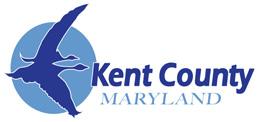
Kent County Department of Economic & Tourism Development
Jamie L. Williams, CEcD, Director 400 High Street, 3rd Floor Chestertown MD 21620 410-810-2168
jlwilliams@kentgov.org www.kentcounty.com/business

Montgomery County Economic Development
Laurie Babb 1801 Rockville Pike, Ste. 320 Rockville, MD 20852 240-641-6704
laurie@thinkmoco.com www.thinkmoco.com

Economic Development Alliance (EDA) of St. Clair County
Dan Casey, CEO 100 McMorran Boulevard 4th Floor, Suite B Port Huron, Michigan 48060 810-982.9511 www.edascc.com stclairhotjobs.com


City of Lakeville Community & Economic Development
Tina Goodroad, Director 20195 Holyoke Avenue Lakeville, MN 55044 952-985-4421 tgoodroad@lakevillemn.gov www.lakevillemn.gov

Greenwood Leflore Carroll EDF
Queen Anne’s County Economic Development
Heather Tinelli, Director 425 Piney Narrows Road Chester, MD 21619 410-604-2100 htinelli@qac.org www.choosequeenannes.com

Talbot County Economic Development
Cassandra M. Vanhooser, Director 11 S. Harrison Street Easton, MD 21601 410-770-8000
Cvanhooser@talbgov.org www.talbgov.org

Michigan Economic Development Corporation
300 N. Washington Sq. Lansing, Michigan 48913 888-522-0103 www.michiganbusiness.org
Thomas Gregory P.O. Box 26 Greenwood, MS 38930 662-453-5321 Thomas@greenwoodedf.com www.greenwoodedf.com

Madison County EDA
Joseph P. Deason, Director 135 Mississippi Parkway Canton, MS 39046 601-605-0368
jdeason@madisoncountyeda.com www.madisoncountyeda.com

Sikeston Regional Chamber & Economic Development Corp.
Marcie Lawson
128 N. New Madrid Street Sikeston, MO 63801 573-471-2498
marcie.lawson@sikeston.net www.sikeston.net


Phelps County Development Corp.
Phelps County Development Corp.
Ron Tillery Executive Director
502 East Avenue, Suite 201 Holdrege, NE 68949 308-995-4148 pcdc@phelpscountyne.com www.phelpscountyne.com


Choose New Jersey
Bill Noonan, Chief Business Development Officer 11-43 Raymond Plaza W, Suite 1420 Newark, NJ 07102 609-297-2200 wnoonan@choosenj.com www.choosenj.com

City of Vineland Economic Development
Sandy Forosisky
640 E. Wood Street, Fourth Floor Vineland, NJ 08362 856-794-4100 sforosisky@vinelandcity.org www.business.vinelandcity.org

Gloucester County Department of Economic Development
Tom Bianco, Director 1480 Tanyard Rd., Sewell, NJ 08080 856-384-6930 tbianco@co.gloucester.nj.us www.gloucestercountynj.gov

New Jersey EDA
Pat J. Rose 36 West State Street Trenton, NJ 08625 609-858-6705 prose@njeda.com www.njeda.com

Albuquerque Regional Economic Alliance
Danielle Casey, CEcD
President
201 Third Street NW, #1900 Albuquerque, NM 87102
505-705-3785
dcasey@abq.org www.abq.org

EDC of Lea County
Jennifer Grassham, CEO
200 E. Broadway Street Hobbs, NM 88240 573-397-2039 jennifer@edclc.org www.edclc.org
Roswell-Chaves County EDC
Michael Espiritu 220 North Main Roswell, NM 88201 575-622-1975
mespiritu@chavescounty.net www.chavescounty.net


Allegany County Industrial Development Agency
Craig Clark, Executive Director CrossRoads Center 6087 State Route 19N, Suite 100 Belmont, NY 14813 585-268-7472 800-893-9484 clarkcr@alfredstate.edu www.acida.org

Saratoga EDC
Tori J.E. Riley, VP 517 Broadway #203 Saratoga Springs, NY 12866 518-587-0945
toririley@saratogaedc.com www.saratogaedc.com

County of Chautauqua IDA
Jason Sample
201 W. 3rd Street, Suite 115 Jamestown, NY 14701
716-661-8302
samplej@chqgov.com www.choosechq.com


Bismarck Mandan Chamber EDC
Nathan Schneider, CEcD-Vice President 1640 Burnt Boat Dr., Bismark, ND 58503 701-223-5660
nschneider@bmcedc.com www.bismarckmandanedc.com

Grand Forks Region Economic Development Corporation
Keith Lund, Pres/CEO 120 N 4th St., Grand Forks, ND 58203 701-746-2722
keithl@grandforks.org www.grandforks.org


Ardmore Development Authority
Andrea Anderson
410 West Main Ardmore, OK 73402 580-223-6162
aanderson@ardmore.org www.ardmoredevelopment.com

Bartlesville Development Authority
Jared Patton, Vice President 201 SW Keeler, Bartlesville, OK 74003 918-337-8086 918-337-0216 (f) jpatton@bdaok.org www.bdaok.org
Broken Arrow Economic Development Corp.
Amber Miller 210 North Main, Suite C Broken Arrow, OK 74012 918-893-2103
amber.miller@bachamber.com www.brokenarrowedc.com

Cleveland County Economic Development Coalition
Lawrence McKinney, CEcD, CCE, IOM President and CEO 425 West Main Street Norman, Oklahoma 73069
P: 405-573-1900
C: 405-881-0456
Lawrence@SelectClevelandCounty.com www.SelectClevelandCounty.com

Erie County Redevelopment Authority
Tina M. Mengine 1314 Griswold Plaza Erie, PA 16501 814-480-0337 x 101 Tmengine@ecrda.net www.ecrda.net
Horsham Township Economic Development
Larry Burns 1025 Horsham Road Horsham, PA 19044 215-643-3131 x 234 lburns@horsham.org www.horsham.org
Penn’s Northeast
John L. Augustine III 1151 Oak Street Pittston, PA 18640 570-883-0504 jaugustine@pennsnortheast.com www.pennsnortheast.com


Quonset Development Corporation
Steven J. King, Managing Director 95 Cripe Street North Kingstown, RI 2852 401-295-0044 sking@quonset.com www.quonset.com

Charleston Regional Development Alliance
Megan Fink 4401 Belle Oaks Drive, Suite 420 North Charleston, SC 29405 843-760-3351 mfink@crda.org www.crda.org
Lexington County Economic Development
Garrett Dragano, Director 212 South Lake Drive Lexington, SC 29072 803-785-6818
gdragano@lexingtoncounty.sc.gov www.LexingtonCountyUSA.SC.gov
South Carolina I-77 Alliance
Christopher Finn
3200 Commerce Drive, Suite D Richburg, SC 29729
803-789-3467
chris.finn@i77alliance.com www.i77alliance.com

SouthernCarolina Regional Alliance
Kay Maxwell 1750 Jackson Street, Suite 100 Barnwell, SC 29812 803-541-0023
kmaxwell@southerncarolina.org www.southerncarolina.org


Blount Partnership
Bryan Daniels CEcD, CCE, IOM President and CEO
201 S. Washington Street St. Maryville, TN 37804
865-983-2247
865-984-1386
bdaniels@blountpartnership.com www.blountchamber.com

Bristol Tennessee Essential Services
April Eads
Business Development Manager 2470 Volunteer Parkway Bristol, TN 37620 423-793-5532
423-793-5545 (f) aeads@btes.net www.btes.net/index.php/economic-development Chattanooga Chamber of Commerce
Jeremy Henderson
811 Broad Street, #100 Chattanooga, TN 37402 423-763-4347
jhenderson@chattanoogachamber.com www.chattanoogachamber.com

City of Lebanon
Sarah Haston
Economic Development Director
200 North Castle Heights Ave. Lebanon, TN 37087 615-443-2839 EXT. 2120
Sarah.Haston@lebanontn.org www.lebanontn.org


City Development Corp of El Campo
Carolyn Gibson, Executive Director 707 Fahrenthold, P.O. Box 706 El Campo, TX 77437
979-543-6727 979-320-7727 cell cgibson@elcampoeco.org www.elcampoeco.org

Big Spring Economic Development Corporation
Teresa Morris 215 W. 3rd Street
Big Spring, TX 79720 432-264-6032 info@bigspringtx.com www.bigspringtx.com

Bowie Economic Development Corporation
Janis Crawley
101 E. Pecan, Bowie, TX 76230
940-872-4193 940-531-8201(c) BEDC@BowieTexasEDC.com www.BowieTexasEDC.com
Cameron Industrial Foundation
Ginger Watkins, Executive Director 102 E. First Street, Suite A Cameron, TX 76520
254-697-4970
254-482-1119 (c) gwatkins@cameronindustrialfoundation.com www.cameronindustrialfoundation. com

Clyde Economic Development Corp.
Rodger Brown 222 Oak Street Clyde, TX 79510
325-386-4444 rodgerbrown@clyde-tx.gov www.clyde-tx.gov
Conroe Economic Development Council
Laura Lea Palmer, Deputy Director 300 W Davis St, Ste 510 Conroe, TX 77301 USA 936-522-3014 palmer@conroeedc.org www.conroeedc.org

DeSoto Economic Development
Matt Carlson, CEO 211 E. Pleasant Run Road DeSoto, TX 75115 Ph: 972-230-9611 mcarlson@desototexas.gov www.dedc.org

Edinburg Economic Development Corp.
Raudel Garza, Executive Director 3111 W Freddy Gonzalez Drive Edinburg, TX 78539 956-388-8914 raudel@edinburgedc.com www.edinburgedc.com

Gainesville Economic Development Corp.
William Myers, Executive Director 311 S. Weaver Street Gainesville, TX 76240 940-665-5241 info@gainesvilletxedc.com www.gainesvilletxedc.com

Hamilton Economic Development Corp.
Kayla Schraub 108 North Bell Street Hamilton, TX 76531 254-386-5954 edc@hamiltontexas.com www.hamiltontexas.com

Harlingen Economic Development Corp.
Orlando Campos, CEO 2424 Boxwood St, Ste 125 Harlingen, TX 78550
956-216-5085
ocampos@harlingenedc.com www.harlingenedc.com
Jacksboro Economic Development Corporation
Brenda Tarpley, Executive Director 302 S. Main Street
Jacksboro, TX 76458 940-567-3151
btarpley@jacksboroedc.com www.jacksboroedc.com

Laredo Economic Development Corporation
David A. Stedman, Sr. 302 S. Main Street
Laredo, TX 78044
956-722-0563 / (800) 820-0564
info@laredoedc.org www.laredoedc.org

Marble Falls EDC
Christian Fletcher 801 Fourth Street
Marble Falls, TX 78654
830-798-7079
cfletcher@marblefallseconomy.com www.marblefallseconomy.com

McKinney Economic Development Corporation
Michael Kowski, President/CEO 7300 SH 121 SB, Ste 200 McKinney, TX 75070 972-547-7687
mkowski@mckinneyedc.com www.uniquemckinney.com

Mineola Economic Development Corp
Cindy Karch, Executive Director
300 Greenville Highway Mineola, TX 75773
903-569-6183
ckarch@mineola.com www.mineola.com

Mount Pleasant EDC
Nathan Tafoya, Executive Director 1604 N. Jefferson Ave. Mount Pleasant, TX 75455 903-572-6602 nathan@mpedc.org www.mpedc.org

Odessa Economic Development Corporation
Tom Manskey
700 N. Grant Ave. Odessa, TX 79761 432-333-7880 tom@odessaecodev.com www.only-odessa.com

Palestine Economic Development Corp.
Christophe Trahan, Director 100 Willow Creek Parkway, Suite A Palestine, TX 75801 903-731-8412 edcdirector@palestine-tx.org www.palestinetexas.net

Pflugerville Community Development
Jerry Jones, Executive Director 3801 Helios Way Suite 130 Pflugerville, TX 78660 512-990-3725 director@pfdevelopment.com www.pfdevelopment.com

Plainview Economic Development Corporation
Kristi Aday, Executive Director 1906 West 5th Plainview, TX 79072 806-293-8536 kaday@plainviewtx.org www.plainviewedc.org

TexAmericas Center
Eric Voyles, Executive Vice President Chief Economic Development Officer 107 Chapel Lane
New Boston, TX USA 75570 903-223-9841 (0) 903-306-8923 Cell Eric.Voyles@TexAmericasCenter.com www.TexAmericasCenter.com

Tomball Economic Development Corp.
Kelly Violette Executive Director 29201 Quinn Road, Suite B Tomball, TX 77377
281-401-4086
kviolette@tomballtxedc.org www.tomballtxedc.org

Whitesboro Economic Development Corp.
Lynda Anderson, Director P.O. Box 340 or 111 W. Main Whitesboro, TX 76273 930-564-3311
landerson@whitesborotexas.com www.whitesborotexas.com

Eagle Mountain Economic Development
Evan Berrett, Economic Development Director
1650 E. Stagecoach Run Eagle Mountain, UT 84005 801-789-6645 eberrett@emcity.org www.eaglemountaincity.com

Alexandria Economic Development Partnership
Kelly Martin 601 Prince Street Alexandria, VA 22314
703-739-3820
703-739-1384 (f) martin@alexandriaecon.org www.alexandriaecon.org

Arlington Economic Development
Ryan Touhill, AED Director 1100 N Glebe Rd Suite 1500 Arlington, VA 22201
703-228-0808
703-228-0805 (f) rtouhill@arlingtonva.us www.arlingtoneconomicdevelopment.com

Bedford County Office of Economic Development
Pam Bailey, Director of Economic Development Bedford County 122 East Main Street, Suite 202 Bedford, Virginia 24523 540-587-5670
pbailey@bedfordcountyva.gov www.bedfordeconomicdevelopment.com

County of Gloucester
Sherry A. Spring Director of Economic Development 6489 Main Street Gloucester, VA 23061 804-693-1414
sspring@gloucesterva.info www.gloucesterva.info


City of Lakewood Economic Development
Becky Newton, Manager 6000 Main Street SW Lakewood, WA 98499 877-421-9126
bnewton@cityoflakewood.us www.buildyourbetterhere.com


Mingo County Redevelopment Authority
Leasha Johnson, Executive Director 1657 East Fourth Avenue Williamson, WV 25661 304-235-0042 304-235--0043 (f) ljohnson@developmingo.com www.developmingo.com


Madison Region Economic Partnership
Kathy Collins, VP Economic Development 8517 Excelsior Drive, Suite 107 Madison, WI 53717 608-571-0407
kcollins@madisonregion.org www.madisonregion.org

New North, Inc
Barb LaMue, President & CEO 2740 W. Mason Street Green Bay, WI 54303 920-676-1960 barb.lamue@thenewnorth.com www.thenewnorth.com

Portage County Business Council, Inc. PCB
Michael Witte, Executive Director 5501 Vern Holmes Drive Stevens Point, WI 54482 715-344-1940 715-344-1940 (f) michaelw@portagecountybiz.com www.portagecountybiz.com


Advance Casper, Wyoming
Justin Farley, CEO
139 W. 2nd St., #1D Casper, WY 82601 307-577-7011
justin@advancecasper.com www.advancecasper.com

Cheyenne LEADS
Betsey Hale, Chief Executive Officer One Depot Square 121 W. 15th St. Suite 304 Cheyenne, WY 82001 307-638-6000 betseyh@cheyenneleads.org cheyenneleads.org

The Laramie Chamber Business Alliance
Josh Boudreau, VP Economic Development 528 South Adams Street Laramie, WY 82070 307-745-7339 jboudreau@laramie.org www.laramie.org


Calgary Economic Development
500 Centre Street S, 32nd Floor
Calgary, Alberta, Canada T2G 1A6
403-221-7831
info@calgaryeconomicdevelopment.com www.calgaryeconomicdevelopment.com
Town of Vegreville
Jamieson Brown
4829-50 Street P.O. Box 640
Vegreville, Alberta T9C 1R7 587-790-0919
jbrown@vegreville.com www.choosevegreville.com
City of Brandon
Gerald Cathcart
Director



Ignite Fredericton
Paula Lehr
40 Crowther Lane, Ste. 100 Fredericton, NB E3C 0J1
506-282-0624
paula.lehr@ignitefredericton.com www.ignitefredericton.com
Imagine Chaleur
Shirley de Silva
702 Principale Street, Ste. 2 Petit-Rocher, NB E8j 1V1 506-542-2688
shirley.desilva@csrchaleurrsc.ca www.csrchaleurrsc.ca
Expansion Dieppe
Louis Godbout
333 Acadia Avenue
Dieppe, NB E1A 1G9
506-877-7850 louis.godbout@dieppe.ca www.expansiondieppe.ca

Elgin County
Main Floor, 410 9th Street Brandon, Manitoba, Canada R7A 6A2 204-729-2131
g.cathcart@brandon.ca www.economicdevelomentbrandon.com

Carolyn Krahn, Manager Economic Development And Tourism
450 Sunset Drive St. Thomas, Ontario, Canada N5R 5V1
519-631-1460 ext. 133 ckrahn@elgin.ca www.progressivebynature.com
City of Guelph
Christine Chapman 1 Carden Street
Guelph, Ontario, Canada N1H 3A1 519--822-1260 ext. 2823
Christine.chapman@guelph.ca www.guelph.ca/business
City of Kawartha Lakes Economic Development
Lindsey Schoenmakers 180 Kent Street West
Lindsay, Ontario, Canada K9V 2Y6 705-324-9411
lschoenmakers@kawarthalakes.ca www.kawarthalakes.ca

Middlesex County
Cara A. Finn, BBA, M. Ad.Ed. Director of Economic Development 399 Ridout St. North London, ON N6A 2P1 519-434-7321 cfinn@middlesex.ca www.investinmiddlesex.ca

Invest Mississauga, Economic Development
Christina Kakaflikas, Ec. D. Economic Development Division
Mississauga City Hall
300 City Centre Drive, 3rd Floor Mississauga, ON L5B 3C1 Canada 905-615-3200 x 5014
christina.kakaflikas@mississauga.ca www.investmississauga.ca
.......................................................................
Town of Aurora Economic Development
Andrew Poray
100 John West Way, Box 1000 Aurora, Ontario, Canada L4G 6J1 905-727-1375
aporay@aurora.ca www.aurora.ca

Vaughan Economic and Cultural Development
Raphael Costa Vaughan City Hall, Level 200 2141 Major Mackenzie Drive Vaughan, Ontario, Canada L6A 1T1 905-832-8526 ext. 8891
raphael.costa@vaughan.ca www.vaughan.ca/Business

